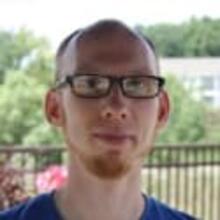
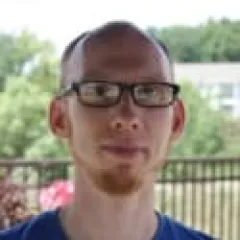
Bio:
Matthew PAIS is the North America director for the Modelling & Simulation technical team focusing on simulation-driven design. He started his career with Dassault Systèmes as an on-site engineer focused on structural simulation and now enjoys interacting with many customers on 3DEXPERIENCE multi-physics simulation solutions. He holds a BS in Mechanical Engineering from the University of Missouri as well as MS and PhD in Mechanical Engineering from the University of Florida.
Abstract:
The Power of Unified Modelling and Simulation in Revolutionizing Product Development From Concept to Detailed Design: Success Stories and Future Directions
Designer-driven simulation, or MODSIM, is a crucial tool for product development that unifies modeling and simulation into a single process. This approach enables designers and engineers to optimize the design and performance of their products with greater efficiency and accuracy. In this presentation, we will showcase the potential of unified designer-driven simulation in transforming businesses by applying it to different industries and scenarios.
Fast Iterations for Structural Design & Simulation
Today most products are engineered with disconnected design and simulation tools which limits the ease with which data-driven decisions can be made. With the 3DEXPERIENCE platform simulations automatically react to design changes enabling rapid design and simulation iterations throughout the product development process. Several topics will be addressed primarily through live demonstration including:
- Concept Structure Engineering
- Multiple interoperable simulation abstractions and representations
- Robust parametric exploration & optimization
- Automated modelling for rapid mesh, property and connection creation
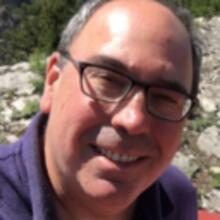
Biography:
Mark has been with SIMULIA for over 30 years. Contributing in a variety of sales and technical management roles, he currently leads a global technical sales group supporting advanced applications. He has degrees in structural engineering from Brown University and the University of California, Berkeley.
Title:
SIMULIA Brand Update
Abstract:
Simulation from the SIMULIA brand is absolutely essential to the vision and ambition of Dassault Systèmes. Simulation is a key driver to address the present and future needs of analysts, designers, producers, and consumers. Simulation not only powers product design improvement and cost reduction, but also innovation and sustainability. Hear about the latest in thinking from our brand executive team including recent trends, focus topics, positioning, and ambition.
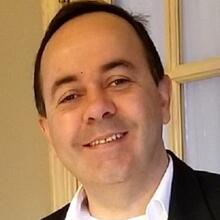
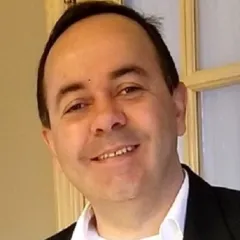
Bio:
Daniel is currently Virtual Design, Development and Validation Manager at General Motors, where he leads a team responsible for Vehicle Dynamics, Loads Prediction and Controls Integration, with the goal of leading the design and integration of new products using virtual tools. Daniel received his M.S. and Ph.D. from the University of Sao Paulo in Brazil in the Vehicle Dynamics domain, and has over 20 years of experience in the automotive industry, with multiple roles covering vehicle dynamics, structures and active controls integration areas.
Title: New Requirements for Multibody Tools in a Fully Virtual Development Process
Abstract:
The need to further accelerate the vehicle design process to enable faster time to market, coupled with the pressure to optimize costs while doing so, is reinforcing the benefits associated with the virtualization of all steps in the product development chain, from early conceptual design assessments to final validation of the product. The transition to a fully virtual development process also means that the utilization of virtual tools that was once relegated to dedicated teams of CAE experts now needs to expand and involve other teams that were previously using hardware more exclusively, as well as the direct engagement of all internal and external partners with calibration or tuning responsibility in a coherently integrated virtual development environment. With this scenario, virtual development tools have to be much more user friendly, efficient and scalable in how they can be used and connected with other virtual tools to integrate different aspects of product development that were previously addressed with in-vehicle activities. This presentation explores the critical items associated with this transition to a fully virtual development process, focusing on the new role of multibody tools, and how GM plans to use Simpack towards accomplishing that goal.

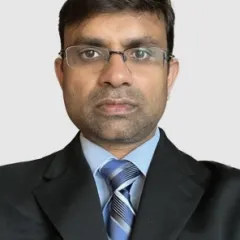
Bio:
Ameer AMBAVARAM is a technical specialist in Noise and Vibration analysis at Mercury Marine (a division of Brunswick Corporation). He is specialized in performing durability analysis on the marine engine components subjected to vibration loads with modal and forced response analysis and also performs structure-borne noise and intake silencer noise attenuation analysis. He has over 17 years’ experience in Finite Element Analysis and primarily working in Abaqus and fe-safe tools.
Title: Coupled acoustic-structural analysis of an intake silencer for transmission loss assessment
Abstract:
An intake silencer is widely used in internal combustion engines to reduce the air-borne noise generated from the pressure pulsations in the intake system. The designing of silencer is a critical factor for attenuating the intake noise at specific frequencies which engine emit. The performance of intake silencer is evaluated from the transmission loss. The transmission loss of the silencer is generally calculated from the inlet and outlet pressures predicted from Abaqus analysis on acoustic medium only, without including structure. This paper illustrates the effect of coupling between a structure and acoustic medium to calculate the transmission loss. When the structural modes interact with acoustic modes, it would change the frequency response which will affect the performance of the silencer. The fully coupled analysis in Abaqus solves these kinds of problems using direct-steady state dynamic analysis with fully structural acoustic coupling. The coupled analysis of an intake silencer has been presented in this paper and the results are compared between the coupled model and air core model and both are compared with empirical results.
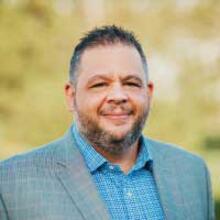
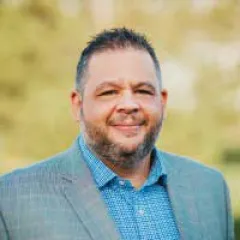
Andre started his career in Brazil and moved to Detroit Area in 2016. He has been enabling HPC and AI solutions in Manufacturing, Higher Education, Energy and Sciences Industries for 25 years working with companies such as SGI, HPE and Lenovo. He has studied Electronic Engineering at FEI in Sao Bernardo do Campo and also has an MBA from FIA in Sao Paulo.

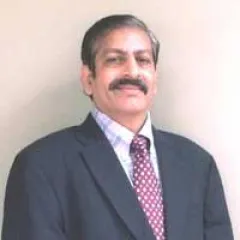
Ram JOGINAPLLI resides in Austin, Texas and is a 35-year veteran of the HPC industry. Trained as an Engineer (Systems, Software, Performance Engineering), turned to Technical and Strategic marketing, Partner Management & Business Development roles with a passion for bringing new technologies, products, and solutions to the market, with a Customer Centric aptitude. Ram carries 3 Master’s degrees and worked for Digital Equipment Corporation, Startup’s, AMD, Microsoft, Dell, Seagate, HPE and Lenovo.
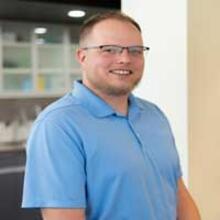
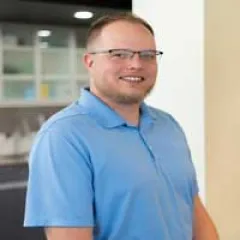
Bio:
Matt SHERAK has been a simulation engineer for nearly a decade, working with customers across a broad range of industries including aerospace, consumer products and industrial equipment. Prior to 2015, he was a researcher for hybrid additive/subtractive manufacturing machines and worked briefly as a design engineer for the general aviation industry. Since then, Matt has worked for GoEngineer and is now a Sr Simulation Product Specialist utilizing many of Dassault Systemes’ FEA and CFD tools, including the 3DEXPERIENCE products. He graduated with a bachelor’s degree in mechanical engineering from the Metropolitan State University of Denver.
Title: FEA IRL: 3D Printing Our Simulations on the 3DEXPERIENCE Platform
Abstract:
As both a Dassault Systèmes and Stratasys additive manufacturing partner, we get to play with a lot of cool software and hardware technology. I was recently asked to bring these two halves together by 3D printing some FEA results. This is the story of how we used 3DEXPERIENCE to model and run a challenging high-speed impact analysis in the cloud, and then 3D print the results. See how we made use of CATIA editing tools, advanced meshing, custom keywords, element deletion, Abaqus cloud solve, and results geometry export – all in 3DEXPERIENCE.
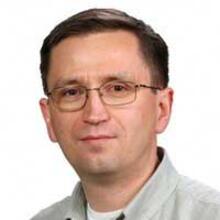
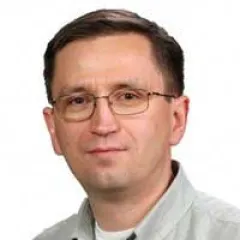
Bio:
His current area of responsibilities is CAE methods, tools, procedures, processes and deployment for design and analysis of e-motors, ISC inverters, and high voltage batteries. Dr. EJAKOV has extensive experience in CAE tools and methods as well as powertrain and vehicle design and testing. Dr. EJAKOV received Ph.D. in Mechanical Engineering from Michigan State University and has been working at Ford for 20+ years at a number of positions in powertrain and engine design where he directly contributed to designing and putting into production many powertrains and vehicles within Ford worldwide.
Abstract:
Simulations for Electrified System Engineering
As automotive industry is going through the transformation from conventional powertrain to electrified propulsion, there is a number of technological challenges. Simulations are integral part of the engineering facing opportunities and challenges.
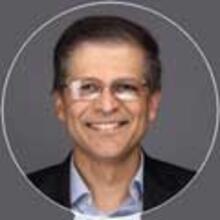

Bio:
Siddhartha KARKARE has over 25 years of technical and business experience in the systems and semiconductor industry. He is responsible for the strategic business development and workload exploration with new technologies for the Manufacturing, Energy and EDA verticals in the Server BU at AMD. He has a BSEE from BITS Pilani, MSEE from Santa Clara University and MBA from UC Davis and is based in Santa Clara.
Title: Engineering to Advance Sustainability Goals
Abstract:
In a challenging business environment undergoing vast transformation, Manufacturers must balance the need to innovate against the need to be efficient and do more with less. This requires highly advanced simulation capability and compute power in a modern high performance data center or cloud. But pressures to operate in a sustainable environment while keeping costs in check can have a limiting impact on Manufacturers’ ability to provide the cutting edge infrastructure their engineers need. In this talk, we will shed light on whether tradeoffs are necessary and what results are realistic to expect from digital transformation.
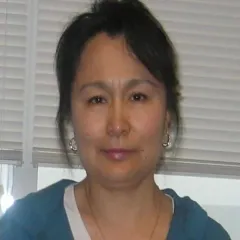
Bio:
I got my Ph. D in the experimental low-temperature magnetism of condensed matter physics from Osaka University in Japan. I worked for Osaka University as a lecturer and for Tokyo University as a researcher. Then I came to the US to develop a magnetic measurement method for the high-pressure study at the University of Alabama at Birmingham. After that, I joined Advanced Photon Source, Argonne National Laboratory, for the magnetic tuning and design of undulators. Since 2014, I joined the APS-U project and designed a DC septum magnet and HPPM undulators for various period lengths of 28 mm, 25 mm, 21 mm, and 13.5 mm. I have also simulated some storage ring magnets’ magnetic crosstalk for the APS-U, including an AC septum magnet. I have about 100 publications.
Abstract:
HPPM undulators and Septum Magnet Designs, and Ring Magnets' crosstalk Simulations for the Advanced Photon Source Upgrade (APS-U) Project Using Opera
The Advanced Photon Source Upgrade project (APS-U) will replace the present storage ring of the Advanced Photon Source (APS) with a new storage ring based on a multi-bend achromat (MBA) lattice. For the APS-U, we have simulated magnetic crosstalk between the Q2 quadrupole and the adjacent M1 longitudinal gradient magnet using Opera for the minimum separation of 5 cm. Opera provided integrated dipole and quadrupole fields crosstalk effect of 0.01% and 0.16 between the M1 and Q2 magnets, respectively. We built those ring magnets and measured their crosstalk. We have confirmed that Opera provided the crosstalk field between those magnets precisely.
We have introduced an advanced design structure to the hybrid planar permanent magnet (HPPM) undulators and simulated for different period lengths of 28 mm, 25 mm, 21 mm, and 13.5 mm for the APS-U. We have built all those undulators and confirmed Opera simulation results. Furthermore, we introduced a novel design concept of canceling the septum magnet (DC) leakage field as an R&D of the APS-U project. We have built a prototype of the septum magnet and measured its leakage field and confirmed that it matches the Opera simulation well. We will present our Opera simulation results of some magnets that we published already by comparing their measurement results.

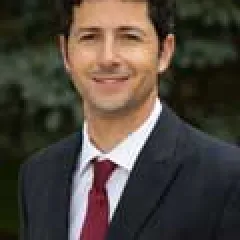
Bio:
George ANTOUN is a Senior Technical Advisor at ATA Engineering, Inc, an engineering services company that provides high-value analytical and test support across a range of industries. Over the past 20 years at ATA as a structural dynamicist, George has worked on an array of aerospace programs applying existing tools and developing new analysis methods using a combination of Abaqus, ADAMS, and Nastran to solve challenging problems that often don't fit neatly into the finite element or Multi-Body Dynamics domain. For the past several years George has supported JPL's technology development effort on Starshade, an origami-inspired deployable structure; first performing pathfinder analyses demonstrating the suitability of Abaqus and more recently supporting their design activities.
George works out of ATA's Rocky Mountain office in Lakewood, just outside of Denver, Colorado.
Abstract:
Using Abaqus to Simulate the Deployment of the OrigamiInspired Starshade
Starshade is a 30–50 m diameter origami-inspired deployable structure that works in conjunction with a space-based telescope to blocks starlight from a distant star and enable high-contrast imaging of exoplanets. Starshade is one of a few technologies in development by the NASA Exoplanet Exploration Program to support the search for habitable exoplanets; the objective of this technology maturation effort is to develop and demonstrate the required new technologies to meet the tight performance metrics so Starshade can graduate into a flight program. Given the uncertainty introduced by testing with gravity-offload systems, flight programs with deployable structures generally require reliable analytical models to simulate the on-orbit deployment behavior and verify that flight requirements are satisfied. With over a hundred gapped hinge joints, a highly packaged origami fold region, geared connections with deadbands, one-way linear ratchets, and contact throughout, the Starshade deployment presents an extremely challenging system to analytically model. Over the past several years, ATA has been supporting
the NASA Jet Propulsion Laboratory with Abaqus modeling, first through a pathfinder analysis to demonstrate the suitability of Abaqus to simulate the Starshade’s deployment and more recently by performing design trade studies and key analyses such as deployed shape repeatability due to environmental variations and
uncertainties. This presentation will provide an overview of the Abaqus modeling and simulation approach, element choice, and the extensive use of connector elements to efficiently model simple mechanisms that are critical to Starshade’s deployment behavior while achieving reasonable runtimes.
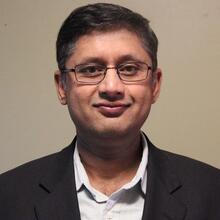
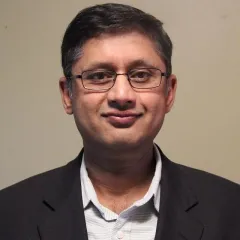
Bio:
Saurabh BAHUGUNA is the Global Technical Specialist for Battery Durability & Fatigue at General Motors. In this role, Saurabh provides technical leadership to the team in the form of developing technical roadmap, leading capability growth initiatives and review of critical program analyses related to Battery Packs and Cells. He is also involved in other leadership activities in the wider analysis community.
Prior to this role, Saurabh was Technical Specialist for Motors and Power Electronics where he was instrumental in development of several analysis capabilities in that domain.
Saurabh has over 20 years of experience in various technical leadership roles, helping companies speed up the product design process using simulation techniques.
Abstract:
Assessment of Battery Pack Durability Using Accurate Vehicle Loads
Battery Packs make up a large fraction of Electric Vehicle mass and are becoming an integral part of the Vehicle structure where Vehicle/Pack behavior is coupled. It becomes imperative to assess durability of the packs using accurate loading from the vehicle as seen by the packs. This can pose technical and procedural challenges due to complexities of pack structural design such as nonlinearities due to materials and preloads. Further challenges are related to different software used for pack and vehicle analysis. A procedure was developed to analyze detailed Battery Packs developed in Abaqus comprehending all the nonlinearities involved and connected to Vehicle models to impose accurate loading. Models can be used to build a set of requirements for pack functional design which may include durability as well as other load cases like assembly and manufacturing. Existing vehicle models in a different software are integrated efficiently with the Pack Abaqus model using substructures. The procedure is very flexible to adjust for requirements of different components, using Abaqus abstractions as needed. Linear or nonlinear analysis is performed depending on the need. Techniques were developed to handle the very
large volume of data generated for assessment of full Battery Pack durability.
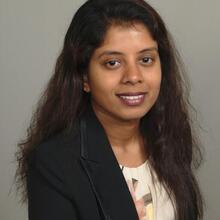
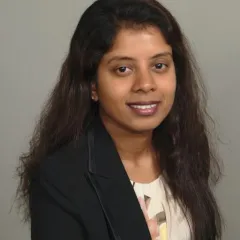
Bio:
Kanchani BASNAYAKE is a PhD candidate in the Civil and Construction Engineering Department of the College of Engineering and Applied Sciences at Western Michigan University in Kalamazoo, Michigan. Her doctoral dissertation is focused on the stress state of concrete posttensioned members in the 2nd Avenue network arch bridge in Michigan due to creep and shrinkage, under Dr. Upul Attanayake (advisor). She has earned her master's degree in Structural Engineering from University of Peradeniya (Sri Lanka) in 2017. Her bachelor's degree is in Civil engineering from University of Peradeniya (Sri Lanka) in 2015.
Kanchani is currently working as a Graduate Research Assistant at the MDOT Center of Excellence for Structural Durability at Western Michigan University. Under the Center, she has worked on multiple research projects funded by the Michigan Department of Transportation (MDOT). These research projects focused on the prestressed concrete deterioration in bridge beams, use of nondestructive evaluation techniques for crack evaluation in concrete beams, and the monitoring of the new 2nd Avenue network arch bridge in Michigan. In addition to working as a graduate research assistant, she has served as a graduate teaching assistant for several undergraduate and graduate courses at both Western Michigan University and University of Peradeniya.
Abstract:
Finite Element Simulation of the Combined Effects of Creep and Shrinkage in Posttensioned Tie Girders
An unbraced network arch bridge was constructed to carry the 2nd Avenue traffic over the interstate (I) 94 in Detroit, Michigan. The bridge is 265 ft long, 96.5 ft wide, and 18-degree skew and comprises of posttensioned concrete tie girders, posttensioned concrete knuckles, posttensioned concrete end diaphragms, transverse steel floor beams, lateral steel bracings, steel arch ribs, hangers, and a deck system. The bridge construction involved multiple construction stages. The tie girders were posttensioned in three steps while the knuckles and end diaphragms were posttensioned in a single step. The bridge was partially constructed offsite, and moved to the final alignment using self-propelled modular transporters (SPMTs) to complete the superstructure construction. The fabrication of the first concrete component to the end of construction took approximately 414 days. The state of stress in the posttensioned components are of a concern when the construction stages and schedule are considered. The objective of this study is to establish the final stress state in the posttensioned tie girders at the completion of construction. A 3D finite-element model of a single vertical frame of the bridge, consisting of the arch held in-plane by the concrete knuckles located at each corner of the tie girder, was created using Abaqus. Tie girders were modeled with hexahedral elements. Posttension strands were modeled with 3D truss elements. The construction sequencing, support restraints, timedependent concrete

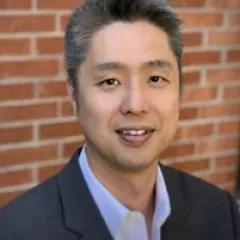
Bio:
Dr. Hsuan-Yu CHOU is Lead Simulation Scientist in NOV Corporate. He has over 10 years experience in performing multiphysics analyses to investigate fatigue, vibration, impact dynamics, and evaluate the structural integrity of designs following standards like ASME, API, BP5500. He has been supported all three NOV business units with a wide range of products including multiple Trailer systems, BOP, Top Drive, Connector/Tool joint, Downhole tools and Process vessels. He also involves in Design of Additive Manufacturing and designs for renewable products.
Abstract:
Failure analysis and structural capacity assessment of threaded connectors in downhole drilling
In downhole drilling, the transmission of mud fluid, weight, torque to the drill bit relies on the drill string. It comprises drill pipes, drill collars and the bottom hole assembly (BHA) including various crossover subs, motor, agitator, shock tool, stabilizer and etc. These components are jointed together using threaded connections. However, due to their complex geometry compared to the pipes or piping components, the treaded joints are prone to failure when the drill string undergoes different loads such as tensile, compression, bending, torque and compression during operation. This presentation first discusses the investigation of the failure at the drill motor connection. A 3D global model is constructed to predict the overall displacements of the drill string, followed by the stress analysis on the detailed 3D Box and pin connection of the motor assembly. Finally, this presentation demonstrates the evaluation of structural capacity when designing a threaded connector.

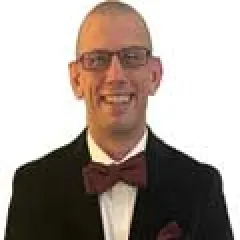
Bio:
Tom FEISTER leads the structures simulation team at TriMech Enterprise Solutions. His background includes metal forming, materials testing, damage modeling, process optimization, structural integrity and tire workflows. He honed his expertise in finite element analysis (FEA) in previous positions at EWI, KTH Parts, Scientific Forming Technologies Corporation (SFTC), and AutoForm Engineering. Tom specializes in helping engineers develop new skills in FEA that can be used to create a safer and more sustainable world. He is also an Ohio-certified Professional Engineer (PE) in the metallurgical and materials field.
Abtract:
CFD Analysis of Gearbox Lubrication using Lattice Boltzmann Solver
An explicit finite element drop simulation was performed in 3DX to capture the fracture observed in a physical event. The geometry was reverse engineered using 3D scanning and X-Ray techniques. SPH particles were utilized to represent the water in the container and a damage factor was optimized to create proper correlation.
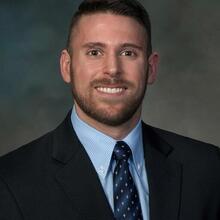
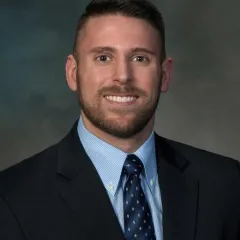
Bio:
Ben Gajus is an Aerospace Engineer at Lockheed Martin in Marietta, GA with 9 years of experience. He graduated from the University of Florida with a Bachelor’s degree in Mechanical Engineering and obtained his Masters degree in Mechanical Engineering with a focus in robotics at Johns Hopkins University. During his career he has held a variety of roles developing a diverse portfolio of experience including Program Management, Mechanical Engineering, and Aeronautical Engineering. He was chosen for the Lockheed Martin Engineering Leadership Development Program (ELDP) in 2018 and graduated in 2021. Before being admitted into ELDP, he held a role as a structural designer and subsystem designer for Lockheed Martin Aeronautics Advanced Development Programs (ADP). During ELDP he completed a rotation in Program Management at Corporate Lockheed Martin, a rotation in ADP Structural Analysis, and a rotation as a Technical Assistant for the Corporate VP of Research and Technology. After completion of the program Ben was hired as a research engineer and technical program manager for Corporate Engineering at Lockheed Martin. Ben’s current responsibilities include Air Vehicle Finite Element Modeling, conduct internal research and development, and continues to program manage.
Abstract:
Project Gamma
Generative design is a paradigm shift in how Lockheed Martin executes its engineering workflow and results in two primary benefits. The first of which is the streamlining of the design process by reducing handoffs between users and software resulting in a reduction in overall cycle times. The second principal benefit is the optimization of design solutions based on objectives. This is accomplished by utilizing physics-based modeling early in the design process and simplifying user access to the power behind advanced solvers. When combined, products may see reduced costs, faster time to qualification, reduced weight and complexity, as well as increased cross-functional engagement without compromising validation and verification. The Project Gamma team, as part of the Lockheed Martin Advanced Development Programs (ADP) Star Drive initiative, has been investigating the generative design utilities within Dassault’s 3DX platform and developing an engineering workflow to assist in understanding and adopting these tools. Through this work, the Simulia solvers within the generative design tool were verified and innovative and non-intuitive design solutions were produced that otherwise may not have
been explored. Compared to traditional design and analysis workflows these iterations were produced in a significantly reduced time.
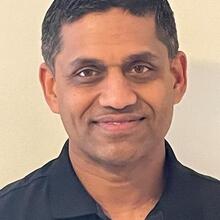
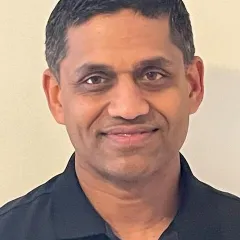
Bio:
John GEORGE has been with Honda ADC (Auto Development Center) since 2014 and is responsible for the reliability of chassis systems. He has more than 15 years of experience in the field of Computer Aided Engineering and Multi-body dynamics. His work experience includes developing load specifications for chassis systems and ensuring that the suspension systems/ components meet all the strength and durability requirements. John is also the Research Lead for the reliability department at Honda ADC. He works with Universities and Research institutions across North America to develop new simulation methods and material models for the reliability team.
He has a master’s degree in Mechanical Engineering from University of Cincinnati.
Abstract:
Tire Modelling for a Wheel Impact Simulation
Tires are essentially rubber based composites reinforced with steel belts, body and cap plies. The tire behaves like a composite with stiffeners of varying rigidity in different directions. Due to the complexities involved in idealizing reinforced elastomers, it is extremely challenging to model a tire with finite element (FE) techniques. In this study, a detailed method to model a pressurized tire utilizing the ABAQUS FE solver is presented. The tire model was then employed to simulate a wheel impact test in-order to
extract the wheel deformations. The simulation results for both tire stiffness and wheel deformation are compared with the experimental results. The comparison demonstrates that the overall tire stiffness and as well as the wheel deformation can be successfully simulated by the method presented in this study
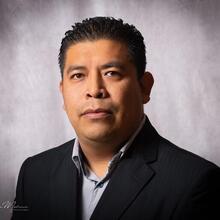
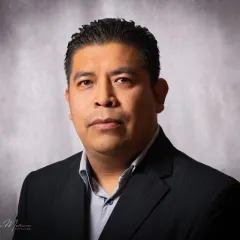
Bio:
Vignaud is a doctor in Science and Technology with a specialty in design and development of mechanical systems. Graduate in PICYT CIDESI Querétaro Mexico in 2021. He is professor in the robotics engineering department of Polytechnic University of Guanajuato. His research interests include advanced design mechanism, mechanical design, CAD-CAM-CAE technologies, fatigue and experimental mechanics.
Abstract:
Simulation of laser shock processing on specimens with Abaqus and fe safe software
Laser shock processing (LSP), a technique for metals strengthening, induces a compressive residual stress field which improves materials mechanical behavior mainly fatigue properties. One of the research lines of our working group focuses on the simulation and validation of the effect of LSP surface treatment, where computational tools such as Abaqus and fe safe are very useful. We evaluate the viability of applying LSP to extend the fatigue life of components with and without concentrator of stress. For the LSP treatment a convergent lens was used to deliver 1.0 J and 6 ns laser pulses by a Q-switch Nd: YAG laser, operating at 10 Hz with 1064 nm of wavelength and density of 2500 pulses/cm2. The pulses were focused to a diameter of 0.9 mm on the surface of the samples without coating. The residual stress field produced by the LSP process was estimated by a finite element simulation, and, on the other hand, residual stress distribution as a function of depth is evaluated by the hole drilling method for validation. A fatigue analysis of specimens is conducted using the commercial code FE-Safe and different multiaxial fatigue criteria to predict fatigue lives of samples with and without LSP. A good comparison of the simulation and experimental results was observed.
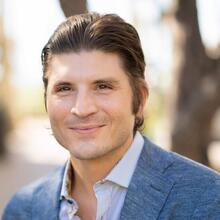
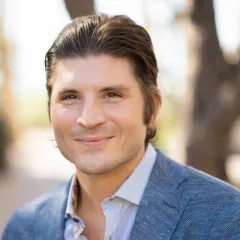
Bio:
From Edina, Minnesota, Paul has his BS in biomedical engineering from Michigan Tech, MS and PhD in biomedical engineering from the the University of Iowa. In graduate school, he focused on computational mechanics working on FEA, CFD & FSI codes with application to patient specific aortic heart valve mechanics. Out of graduate school, he worked for SIMULIA in the Dearborn office as a Solution Consultant doing a mixture of project work, support, training and account management. After he worked in R&D at Medtronic, building advanced mechanical FEA analyses. Now a Senior Solution Consultant at TriMech. Market segments where Paul has the most experience includes life sciences, transportation & mobility and consumer goods. In addition to advanced knowledge of Abaqus Implicit/Explicit, Paul enjoys using Tosca to deliver optimized design proposals pushing the limits of what is possible. When not working, Paul enjoys going to the beach, golfing, surfing and camping.
Abstract:
Automated Design of Laser Cut Delivery Shafts (Hypotubes)
Automated design of laser cut delivery shafts (hypotubes) employing nonlinear finite element analyses. Optimal cut patterns reach shaft performance targets and control manufacturing cost. As a predictive modeling technique, the proposed workflow can accommodate a diverse range of device requirements and reduce the burden of physical testing. This method reduces development time and facilitates introduction of new devices aiding in market capture.

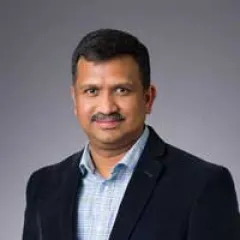
Bio:
Murthy LAKSHMIRAJU, Ph.D., has over 15 years of advanced use and experience in CFD to solve real-life engineering problems for numerous industries, including appliances, energy, CPG, and Life Science. He graduated with Masters and Ph.D. in Mechanical Engineering from Tennessee Tech, USA. He has experience in different flow physics, including advanced turbulence modeling, multiphase flow, heat transfer, Dynamic Fluid Body Interaction (DFBI), Fluid-Structure Interaction (FSI), Conjugate Heat Transfer (CHT), and reacting flows with combustion and emission modeling.
Abstract:
Air Cooled Heat Exchanger Operating Performance – Improve Fan Cooling Efficiency using SIMULIA PowerFLOW
Air Cooled Heat Exchangers (ACHE) are used in oil and gas, power, steel, automotive, and several other industries to remove heat from process fluids. In a typical ACHE, a fan forces or induces ambient air to flow across a bundle of finned tubes carrying hot fluids. An ACHE may be as small as an automobile radiator or large enough to reject heat from a refinery or a power plant that requires over 100s of modules, each with 16 to 60-ft diameter fans. ACHEs are an economical and environmentally green" solution that does not require extensive water treatments to reduce fouling and corrosion problems or wastewater discharge to the environment.
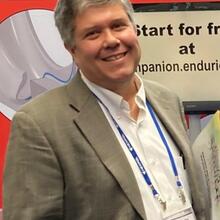
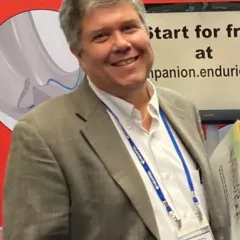
Bio:
Dr. Will MARS is an international leader in the failure mechanics of rubber. He is the founder and president of Endurica LLC, and the firm’s products are now in use by thirteen of the top twenty global rubber part suppliers to manage durability. He is the author of the Endurica fatigue life solver, the world’s best-validated fatigue life simulation system for elastomers. Dr. Mars’ career focuses on applying experimental and computational mechanics in pursuit of better-performing rubber products and he has three decades of experience developing testing and simulation methods in the rubber industry. Dr. Mars earned his Honors BSME with Polymer Specialization at the University of Akron, and his MS and Ph.D. degrees at the University of Toledo. He has received several awards for his scientific contributions and innovations including the 2022 Herzlich Medal for outstanding impact and innovation in the tire industry, the 2020 Tibbett’s Award from the Small Business Administration of the United States for excellence in creating cutting-edge technologies, the 2017 Rubber Division ACS Arnold Smith Special Service Award, the 2007 Sparks Thomas award of ACS Rubber Division, and the 1999 Henry Fuchs award of the SAE Fatigue Design & Evaluation committee. Dr. Mars served as the chief editor of Rubber Chemistry and Technology for 10 years and is a former editor of Tire Science and Technology as well. He has over 60 peer-reviewed scientific publications and four patents in the area of elastomer durability.
Abstract:
Virtual Qualification of the Durability Performance of an Elastomeric Mount with Endurica
An elastomeric mount sees complex loads in service, and engineers must show that the mount can endure those loads. This presentation shows how the entire qualification procedure used by Ford for an elastomeric motor mount can be simulated in Abaqus and post-processed with Endurica. The loading schedule is composed of 144 different events recorded at the test track, each having as many as 6 input channels (3 forces and 3 moments). The analysis begins by computing a nonlinear map of finite element model stress-strain fields to a series of sampling points in the global load input space. This map is then used in Endurica EIE to rapidly generate full transient stress-strain history (15.6 million time steps!) for each finite element. This process produces 3.2 TB of stress-strain history, which is then passed to Endurica CL to solve for fatigue life. The analysis takes into account the elastomer's nonlinear material properties, and correctly predicts failure location and fatigue life. The entire process was executed in 90 hours of compute time.
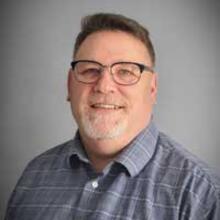

Bio:
Scott SHAW is a Manager in the Performance Engineering group at HPE. Scott started working for HPE in 2016 when HPE acquired SGI. In total Scott has been with HPE over 25 years and continues to provide Abaqus performance tuning, customer benchmarking and HPC product positioning for HPE Sales & Marketing teams. Since 1995, Scott has worked with various automotive companies and government agencies in structural and CFD simulations and performance tuning on large SMP and distributed clusters. Scott has authored and co-authored several technical papers and technical presentations. Scott is a US Navy veteran and holds a Bachelor of Science Degree in Computer Science from Lawrence Technological University.
Abstract:
Optimizing Abaqus Unified FEA Portfolio on Intel 8400 series processors
HPE shares a common goal with Simulia in helping customers solve simulation challenges by delivering best in class high performance computing, server, storage, and data management solutions industry HPE is recognized as a trusted leader in technical computing and has over 30-year partnership with SIMULIA and with Abaqus FEA customers. The HPE presentation is intended to help Abaqus customers make knowledgeable choices regarding selecting high-performance computing (HPC) hardware to optimally run Abaqus FEA software from the SIMULIA brand of Dassault Systèmes .

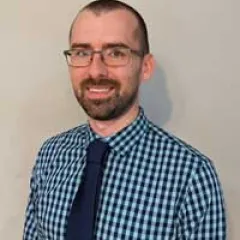
Bio:
Aeronautical Engineer from Purdue- 15+ years of Simulation experience- Additionally is an SME in data engineering, process automation, and process optimization
Abstract:
Using CST to Pass Physical Tests the First Time
Every magnetic product that plans to be shipped by air must pass the IATA physical test for dangerous goods, which requires testing a full pallet of products. Product design teams can use simulation during the early design phase to include these test requirements early on. Dassault CST allows design teams to test the magnetic field virtually with confidence, and avoid the costly scenario of building a full pallet’s worth of goods only to fail a physical test. Dassault CST makes it possible to pass the test the first time.
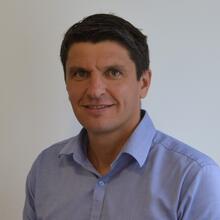
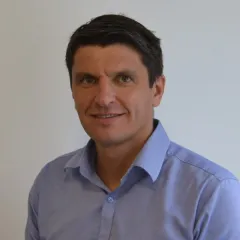
Bio:
Dr. Osipov has 15 years of experience in FE modelling and material behavior simulations. He received his Master Degree in Applied Mechanics from the St. Petersburg Polytechnic University, Russia and his Doctorate at the Ecole des Mines in Paris, France. Since 2007 Nikolay has been working at Transvalor to develop and commercialize Z-set software. Current topics of Nikolay's interests are material behavior simulation, durability analysis and crack propagation.
Abstract:
Z-set to Abaqus: Efficient Tools for Advanced Material Modeling, Damage Analysis and Crack Propagation Simulations
TRANSVALOR is a software and engineering services company. TRANSVALOR offers an extensive portfolio of high-performance simulation software that addresses a wide range of industrial applications from forming processes (FORGE@, COLDFORM@ THERCAST@, SIMHEAT@) for metallic solid and liquid materials to structural analysis and life time estimation (Z-SET SUITE). Our simulation software brings significant scientific, engineering and modelling know-how to a number of industries(Aerospace, Automotive, Energy.. )In addition to its headquarters in France, TRANSVALOR is present worldwide thanks to its subsidiary and its very dense network of distributors who provide both sales and assistance functions. The American market and customers are served through Transvalor Americas Corp, located in Chicago. Since 1996 TRANSVALOR commercializes Z-mat for Abaqus - a library of constitutive models for plasticity and visco plasticity with robust integration methods and advanced coefficient identification procedures. The actual package of integrated solutions provided by TRANSVALOR helps customers to solve challenges ranging from material modeling and parameters' calibration to fatigue life estimation and 3D crack growth simulations. In our talk we will go through the presentation of the Z-set products and their interfaces with Abaqus and provide examples of applications to industrial problems. A particular focus will be given to the 3D fracture analysis tool Z-cracks and crack propagation simulations.
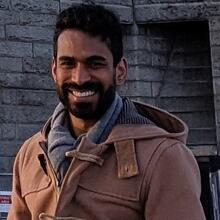

Bio:
Parameshwaran PASUPATHY is a 4th year PhD student at the Department of Mechanical and Aerospace Engineering. His dissertation is on the multi-scale computational modeling of brain tissue, which is at the intersection of mechanobiology, computational solid mechanics, and interfacial mechanics. His interdisciplinary research on micro-scale modeling of white matter seeks to develop a fundamental understanding of brain injury and its relevance in detecting mTBI (mild-Traumatic Brain Injury), which is currently undetectable by standard diagnostic tools (such as MRI and DTI.). Paramesh has a Masters degree in Aerospace Engineering from the University of Michigan. Prior to beginning his PhD at Rutgers, Paramesh worked as an Senior Technical Engineer for Siemens PLM as a part of their HEEDS multi-disciplinary design optimization team.
Title: A fractional viscelastic model of the axon in brain white matter
Abstract: Traumatic axonal injury occurs when loads experienced on the tissue-scale are transferred to the individual axons. Mechanical characterization of axon deformation especially under dynamic loads however is extremely difficult owing to their viscoelastic properties. The viscoelastic characterization of axon properties that are based on interpretation of results from in-vivo brain Magnetic Resonance Elastography (MRE) are dependent on the specific frequencies used to generate shear waves with which measurements are made. In this study, we aim to develop a fractional viscoelastic model to characterize the time dependent behavior of the properties of the axons in a composite white matter (WM) model. The viscoelastic powerlaw behavior observed at the tissue level is assumed to exist across scales, from the continuum macroscopic level to that of the microstructural realm of the axons. The material parameters of the axons and glia are fitted to a springpot model. The 3D fractional viscoelastic springpot model is implemented within a finite element framework. The constitutive equations defining the fractional model are coded using a vectorized user defined material (VUMAT) subroutine in ABAQUS finite element software. Using this material characterization, representative volume elements (RVE) of axons embedded in glia with periodic boundary conditions are developed and subjected to a relaxation displacement boundary condition. The homogenized orthotropic fractional material properties of the axon-matrix system as a function of the volume fraction of axons in the ECM are extracted by solving the inverse problem.
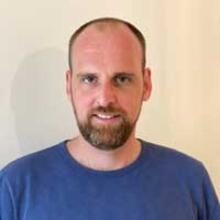
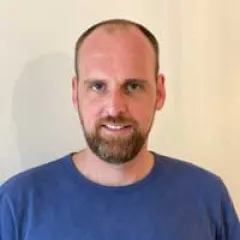
Bio:
Ian graduated the University of Southampton in the UK with a master’s degree in aerospace engineering. Formally a CFD Application Engineer, Ian now head-up business development for CAE at NVIDIA. Outside work Ian is a keen runner, programmer, and enjoys skiing. Ian is based in Chicago.
Abstract:
Usage of NVIDIA GPU Acceleration in the 3DExperience
Learn how to optimize your design and manufacturing experience using NVIDIA GPU. What are the session objectives: This session will mainly cover the benefits of GPU acceleration for the below applications: SIMULIACST SIMULIA XFLOW SIMULIA PowerFlow SIMULIA Abaqus results/conclusion: At the end of this session, attendees should be able to know if the paint point they experience in their workflow can be improved by the usage of GPU acceleration. Industry: Aerospace & Defense, Construction, Cities & Territories, Consumer Packaged Goods & Retail, High-Tech, Home & Lifestyle, Industrial Equipment, Marine & Offshore, Transportation & Mobility
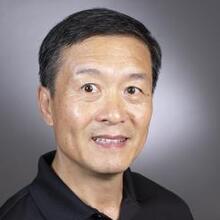

Bio:
Zheng PENG earned his Bachelor degree in mechanical engineering in 1982 and Master degree in vehicle engineering in 1985 in China. He graduated from the University of Missouri-Rolla (UMR) with a Ph.D. degree in engineering mechanics in 1995.
Zheng worked with Ford Motor Company during the period of 1995 to 2006. He was a vehicle crash safety engineer and performed CAE on multiple vehicle platforms in various Ford organizations. During his employment with Ford, he was awarded 8 US patents, with some filed and awarded in the Great Britain, Germany, and Japan.
Zheng has been employed by FM Global since 2009 and is now a Lead Scientist. He has worked on various projects across multiple industrial areas, including wind turbines, water main pipes, PV panels, fire resistance of steel columns, commercial racks in fire, etc. Zheng used Abaqus in some of these projects for structural and heat transfer analyses.
Abstract:
A Method to Calculate Effective Wind Area for Ballasted Roof-mounted Solar Panels
This stud proposes a method to calculate the effective wind area (EWA) for ballasted roof-mounted photovoltaic (PV) panel s stems. We consider the structural interaction between PV panels, supporting beams, ballasts, and wind loads, using Finite Element Analysis (FER) by Abaqus. The Structural Engineers Association of California (SEROC) wind loading guidelines for roof-mounted PV panels (SEROC-PV2) present a general procedure to calculate the EWA, but do not provide any guidance for testing or analysis. The proposed method includes four main steps. First, possible structural loading areas are identified corresponding to corner, edge, interior of the PV array . Second, FER is performed for all the possible load cases. The third step determines the load cases that can result in the least structural resistance and load capacity as the structural loading area increases. Finally , the proposed method identifies the EWA from the intersection of the structural capacity curves and the design wind loads. The load capacity curve is defined as a function of structural failure load vs. the number of panels that are loaded. The proposed method is demonstrated by analyzing, using Abaqus, a ballasted roof-mounted PV array .
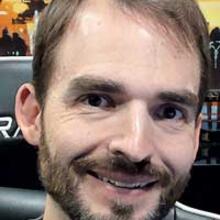
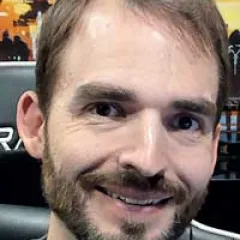
Bio:
Scott PIPER received a BSE in Electrical Engineering from the University of Michigan – Dearborn in 2004. Scott has worked in the field of electromagnetic compatibility in the 19 years since at various companies within the automotive and aerospace industries. Scott started his career working with a program called Flo EMC which later became Simulia CST’s transmission line matrix solver and has used products within the CST studio suite for many years after for electromagnetic analysis. Scott currently works for General Motors as a global resource for developing CAE methods for electromagnetics and is a new Simulia Champion for 2023.
Abstract:
Overcoming Challenges in EMC Virtual Validation
Corporation Engineering development cycles are currently being compressed allowing advanced technology to arrive on the market sooner. To enable this, more engineering needs to take place before hardware is built and tested which works well for well defined aspects of design but is a challenge for electromagnetic compatibility (EMC) which have many unknowns even after testing is performed. Hope is not lost! This presentation will focus on strategies using CST Studio Suite that give the engineer valuable information creating EMC compliant designs even before a product is built which include what can be done about information that is not known. Examples will be shown using CST Studio Suite along with discussion on how they may be used to bring us closer to 100% virtual EMC validation.
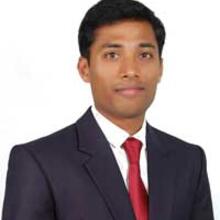

Bio:
Dr. Deepak PKKALLA is a postdoctoral research associate in applied mechanics, composites manufacturing, and machine learning at the Oak Ridge National Laboratory. Dr. Deepak holds a Ph.D. in Applied Mechanics from National University of Singapore (NUS) and a bachelor’s degree in Civil Engineering from Indian Institute of Technology (IIT), Varanasi. Prior to joining Oak Ridge, he worked on deployable multi-stable mechanical metamaterials as a postdoctoral researcher at McGill University. His expertise is in employing finite element methods, structural optimization, and machine learning techniques to design novel material systems and manufacturing processes. He is currently working on accelerating design and manufacturing of automotive composite parts through simulations and machine learning. Dr. Deepak published several papers in peer-reviewed journals and received several accolades including 'Best Paper Award' from Engineering Mechanics Institute (ASCE) in 2020, IIT (BHU) Varanasi and CRS Iyengar Memorial Gold Medals from IIT Varanasi in 2016.
Abstract:
Simulation, Optimization, and Additive Manufacturing of Novel Material and Structural Systems using SIMULIA
The development of virtual models that accurately captures underlyingphysics across multiple scales and physical phenomena are of increasinginterest to evaluate and improve end-to-end industrial processes. In thiswork, the capabilities of SIMULIA for a wide variety of industrial processessuch as simulating novel manufacturing techniques, designing automotivecomponents and large-scale molds, and analyzing deployable spacestructures are illustrated. SIMULIA’s capability to accurately predict thedeformations and mechanical responses in nonlinear regime for static anddynamic loadings is illustrated through design of polymer compositelattice structures and an automotive bumper, including experimentalvalidations. The Abaqus ability of topology optimization through Tosca andsimulating multi-body structural assemblies are illustrated by designingdoor armrest and automotive seatback frame. The use of Python scriptingwithin SIMULIA to automate all sort of tasks allows creation of workflowsfor quickly analyzing large parametric design domains. Such a capability isdemonstrated through the analysis and design of novel bistablemechanical metamaterials for deployable space structures. In addition, thepredictive capability of Additive Manufacturing (AM) Modeler plug-in forthermomechanical process simulations is illustrated through anexperimental validation via a large-scale material extrusion additivemanufacturing of composite parts. Overall, SIMULIA enablesmultidisciplinary-multiscale simulations for end-end-end industryprocesses as summarized through various applications
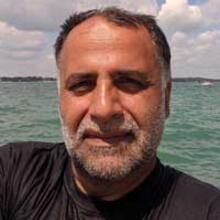
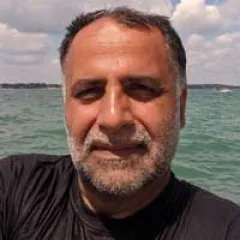
Bio:
Reza RAHMANI is a Technical Lead in Cabin Comfort VDDV at General Motors. His specialty is in Seat Comfort analysis where seats are subjected to various static load cases ranging from fixtures to humanoid manikins. Reza’s educational background is applied physics, mechanics, and tissue engineering and has more than 27 years combined automotive CAE experience. He loves to expand CAE capabilities while working at GM.
Abstract:
Static Seat Comfort DOE Variation Study to Understand the Impact of Seating Adjustment & Occupant Posture on Seat Pressure Distribution
Today’s Car seats and the technologies used in them have evolved multifold over the time with changing customer needs, vehicle regulations, and levels of autonomy. Each level of autonomy is opening new opportunities and challenges to create a delightful human experience by achieving excellent seat comfort. Seats are always being designed to take care of various percentiles of occupant’s comfort requirements, and hence seats are equipped with various seating adjustment features. However, there is an enormous variation in each percentile occupants the way they occupy and achieve comfortable seating position by using the seating adjustment features. Also, there is a difference in occupant seating posture the way individuals have adopted to their own driving habits or styles due to various circumstances. The objective of this paper is to highlight the outcome of a study conducted to understand the sensitivity of all possible variations in seating position and occupant posture on occupant’s seating comfort. This study was conducted by replicating the physical occupant seating posture in CAE environment.

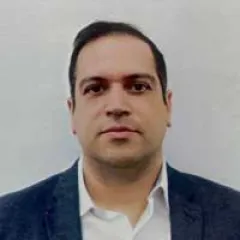
Bio:
Pooyan RAZI has received his PhD in Mechanical Engineering from Texas A&M University with the focus on separated flow aerodynamics and turbulence modeling. After graduation, he joined GM in 2016, and has transitioned to the vehicle aerodynamic group since 2018. He has worked in aero group for almost 5 years, and have worked on several programs to optimize vehicle aero, noise and contamination. He is now aeroacoustics technical lead at GM, and is dealing with capability growth across GM for wind noise evaluations.
Abstract:
Rear Roof Spoiler Vent Noise: Root-cause & solution strategies
Rear roof spoiler with open vent is a major concern for wind noise. This issue was identified for a program at the late stage of design. Immediate solution requires use of acoustics laminated glass for the backlite glass. However, due to initiation of tooling devices, and maturity of surface design, this solution is limited by cost and manufacturability. Therefore, aeroacoustics simulations have been performed to identify noise source, and propagation of acoustic waves resulting in undesirable cabin interior noise performance. Surface change proposals based on physical insight of the flow behavior are developed by CFD tools which led to the cabin interior noise reduction of 77% with no degradation to aero and backlite glass contamination. Based on CFD-developed surfaces, rapid prototype (RP) parts are built to evaluate CFD findings. Test results show significant improvement for cabin interior noise of up to 67% following the CFD- recommended surfaces. This study showcases the ability of CFD tool to root-cause the issue looking at the averaged and transient flow quantities, and the correlation between CFD and wind tunnel data. As the concept of rear roof spoiler with open vent is getting more popular with styling, this study serves to identify the potential wind noise issues in the early stage of vehicle development process and mitigate the risk of noticeable cabin interior noise perceived by customers.
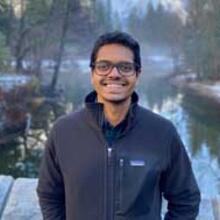

Bio:
Venkat SANTHANAM is part of the Modeling & Simulation team for the Performance Solutions Division located at Elkton, Maryland. He has been conducting structural mechanics simulations for more than 4 years while at Gore, primarily using Abaqus CAE, to enable future growth of the division. He has helped several projects in root cause investigation, materials down-selection and fundamental understanding of materials in application as an FEA expert.
Outside of work, Venkat enjoys running and weight-lifting
Abstract:
Modeling Viscoelasticity in Threads using Abaqus CAE
A 3D FEA model was developed to determine the right amount of torque to apply to a threaded polymer assembly. The threaded connection, designed for liquid transport, is used to seal an enclosure and to ensure that no leakage occurs over time due to creep behavior of the threads. The goal was to balance two failure mechanisms – if too much torque is applied, it could result in plastic deformation in the threads. However, too little torque would lead to leakage over time resulting in failure of assembly. Abaqus CAE was used to model this time-dependent behavior and predict the strain in the threads with respect to time. A nonlinear time-dependent material model was developed with surface-to-surface contact applied between the components. The material model was calibrated to multiple stress relaxation tests at different strain holds conducted experimentally


Bio:
For the past 30 years, Reza Taghavi has worked in areas of engineering as varied as hydraulics, cavitation, underwater acoustics, geomechanics, discrete element modeling, CFD, engine design, high-performance computing, haptics, and mesh generation at Renault automobiles, Cray Research, and Itasca consulting Group.
Reza is the founder of SIW Corp., which develops Tex, an automatic all-hexahedral mesh generator for thin parts. He is also the founder of Tactile Image and developer of a neck-worn tactile feedback device for acceleration perception and situational awareness. He is also a founding member of the International Meshing Roundtable.
Reza’s earlier products include CRI-TurboKiva, a combustion simulation product developed with Los Alamos National Laboratory, Hexar, an all-hexahedral meshing product now an HP Enterprise asset, and Kubrix, a meshing tool now an Itasca Consulting product.
Reza obtained a PhD in Fluid Mechanics from the University of Minnesota and an engineering diploma from Ecole Nationale des Ponts et Chaussées in Paris.
Abstract:
ABAQUS all-hexahedral meshing requirements for the non-linear analysis of optimized parts featuring extreme thickness variations
Extreme thickness variations in a part often require to visually select the regions to be 2D-abstracted and manage the transition to the rest of the ABAQUS model. The key to reducing element count is using high aspect ratio hexes in thin regions. This is because properly stretched hexahedra maintain their Jacobians while no stretched tetrahedra ever does. Tex is a fully automatic all-hexahedral meshing engine for ABAQUS which is particularly suited for the non-linear analysis of complex shapes featuring extreme length scale variations such as space structures, electronic components, mobile devices, MEMS, fluidic devices, and shapes with locally high aspect-ratios such as those typical in additive manufacturing, welding, and automated shape optimization. Tex uses MEES (Mid-object Extraction and Extrusion at Saddle points) to decompose complex geometries into compatible extrudable mesh blocks in such a way that mesh resolution span wise and across the object can be adjusted independently. MEES relies on the fact that any 3D object may be decomposed into a collection of extrusions. First, a mid-surface is extracted and pruned to specifications informed by surface curvature and quad meshed. Next, a careful reconstruction of extrusions at all mid-surface intersections results in an all-hex mesh. A universally recurring morphology in nearly all mid-objects is that of the saddle point whose treatment during extrusion is key to a successful extrusion. The result is a quality all-hexahedral mesh with element counts typically 10 to 100 times less than equivalent tetrahedral meshes and faster convergence to a more accurate solution.
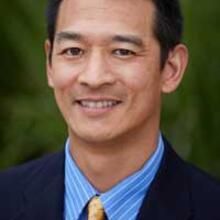

Bio:
Dr. Yang earned his Bachelor of Science in Mechanical Engineering from Purdue University in 1997, and his Master of Science and Ph.D. in Mechanical Engineering from The Pennsylvania State University in 2001 and 2003. He works at ATA Engineering (ATA), an employee-owned engineering services company dedicated to customer success through the delivery of innovative engineering solutions created by passionate, expert, multidisciplinary teams.
Dr. Yang serves as a senior technical advisor and the technical director of ATA’s acoustics technical team. In this role, he is responsible for mentoring junior engineers, assisting in business development efforts, and innovating new methods to keep ATA at the forefront of the technologies that customers will need. He played a major role in developing methods to predict random vibration environments during liftoff and ascent for NASA’s Orion and Ares I-X programs, for which he was a recipient of multiple NASA Group Achievement Awards. Dr. Yang has supported similar efforts for a wide variety of single-use and reusable commercial launch vehicles and is an expert in the vibroacoustic analysis of spacecraft.
Abstract:
Overview of Vibroacoustic Challenges in the Aerospace Industry
This presentation will provide an overview of the vibroacoustic challenges common to the aerospace industry. Covered topics include analysis objectives, definition of fluctuating pressure loads, and the use of Wave6 to meet those objectives. The presentation will include specific and general examples.

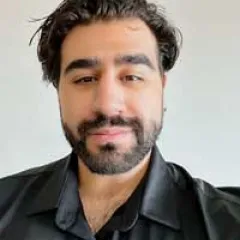
Bio:
Hi, I’m Mark ZAKHEM. I am a Sr. Hardware Design Engineer at Inovonics. I received my undergraduate degree from CU Boulder in Electrical Engineering and my Masters Degree from CU Boulder with a focus on RF and Highspeed design. I have been with Inovonics for nearly 2 years and my main focus of work has been designing custom printed antennas for our new products. Over the past few years, I have used CST Studio to design our most complicated and unique antennas to date. Last year I presented for CATI for their webinar, where I highlighted all the unique solutions and methods used through CST to achieve these complex and unique antenna design solutions. I showcased the capabilities of building unique environments for the antennas, optimizing through parameters, using the 2D/3D results (Electric & Magnetic Fields) and Far Field results for further validation, and an overview of the CST software concerning antenna simulation.
Abstract:
Using CST to create unique antennas
At Inovonics, most of our products require the use of a custom printed antenna specifically made for each product. Over the past few years, I have used CST Studio to design our most complicated and unique antennas to date, achieving form factors and functionally not possible before the use of CST. I was a presenter for CATI last year for their webinar, where I highlighted all the unique solutions and methods used through CST to achieve these complex and unique antenna design solutions. I showcased the capabilities of building unique environments for the antennas, optimizing through parameters, using the 2D/3D results (Electric &Magnetic Fields) and Far Field results for further validation, and an overview of the CST software concerning antenna simulation. I also touch on using SOLIDWORKS to aid in the antenna simulations, which involve importing unique custom enclosures to see their effect on the antennas. Many of the designs shown would have not been possible without the use of CST Studio, showcasing the possibilities of what can be achieved through simulation
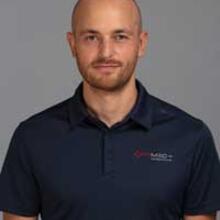
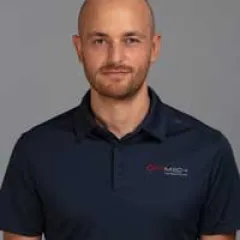
Bio:
- Master’s degree in Aeronautical Engineering, from IPSA, France, in 2013
- Master of Science in Mechanical Engineering, from Laval University, Quebec, in 2016
- Research thesis about FEA of delamination on aerospace composite material for CRIAQ projects
- Dassault Systemes – SIMULIA Technical Support certified since 2017
Abstract:
Applications of Virtual Testing in Automotive Industry Following Industry Standards
Virtual testing by simulations have become increasingly important in theautomotive industry to help companies mitigate the risk of failingcertification tests. This paper presents several industrial cases, followingthe industry standards set by the FMVSS, the NHTSA and the MASH.Virtual testing allowed to detect the potential sources of failure and torectify any design flaws, avoiding the manufacturers substantial costs andsignificantly reducing their time to market.
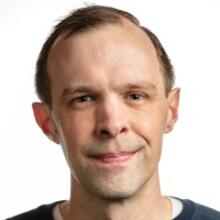
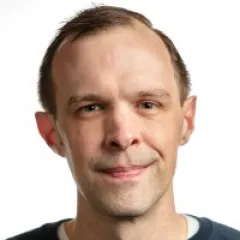
Bio:
Ross MCLENDON is a member of SIMULIA R&D and recently assumed the role of Product Manager for Abaqus Unified FEA. Before this, he worked as a mechanics developer for the Abaqus solvers and the Material Calibration App for 3DEXPEREIENCE after starting at DS in the back-end mechanics support team. He additionally oversees the Micromechanics Plugin for Abaqus/CAE, which is used throughout industry and academia for FE-RVE simulation. He holds a Ph.D. in Aerospace Engineering from Texas A&M University where his research focused on multiscale material simulation of composites.
Abstract:
SIMULIA 2023 Structures Update
The Abaqus finite element solvers are the core technology behind SIMULIA’s class-leading realistic structural simulation capability, empowering our customers to address today’s most challenging engineering problems using the 3DEXPERIENCE platform or the Abaqus Unified FEA applications. This presentation will cover recent updates and improvements that have been made in the Abaqus solvers, ranging from new capabilities in coupled field analyses needed to enable the new wave of electrification to performance improvements that enable analysts to rapidly solve ever-larger problems.
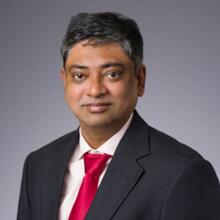
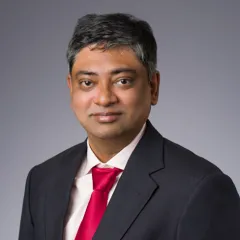
Bio:
Arindam CHAKRABORTY, PhD, PE (TX, CA): Dr. CHAKRABORTY is a Simulation Expert with more than eighteen years of strong academic and consulting experience in computational mechanics and design, non-linear FEA, fatigue and fracture mechanics, reliability analysis, optimization. He is currently the global CTO of Engineering Consulting at VIAS3D. His rich experience includes industries such as Energy and Materials (Oil & Gas, Process & Petrochemicals, and Nuclear), Life Science, Consumer Goods, Hi-Tech, Industrial Equipment, Aerospace, and Automotive. He is involved with consulting business strategy and leadership, development of new technologies with AI-ML, and future growth strategy in Modeling and Simulation with strong focus on sustainability, democratization, public safety regulations (BSEE, NRC, FDA), and digital transformation. He has experience in automating complex engineering problems using scripts and web tool development and cloud deployment. Dr. Chakraborty has more than thirty conference and journal publications and many invited talks and panel discussions. He is involved with code (ASME, API) and international conferences committees. He is Dassault Systèmes Certified Training Instructor and has delivered University courses as invited lecturer.
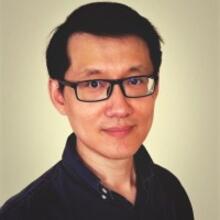

Bio:
Dr. Zhenqi YANG works as a Lead Simulation Scientist in the NOV corporate office. For the past three years in NOV, he worked on multiple high-pressure high temperature (HPHT) design verification and validation of BOPs, connectors based on ASME BPVC, API, and DNV standards. Before joining in NOV, Zhenqi worked in an engineering service group in Siemens PLM. He has over ten years of experiences in industrial, working on multiphysics analysis and simulation based design qualification, structural optimization to support the engineering design and manufacturing in energy, aerospace, and automotive fields. He has a PhD degree in mechanical engineering. He has also worked as a postdoc researcher in Northeastern University after graduation.
Abstract:
Failure analysis and structural capacity assessment of threaded connectors in downhole drilling
In downhole drilling, the transmission of mud fluid, weight, torque to the drill bit relies on the drill string. It comprises drill pipes, drill collars and the bottom hole assembly (BHA) including various crossover subs, motor, agitator, shock tool, stabilizer and etc. These components are jointed together using threaded connections. However, due to their complex geometry compared to the pipes or piping components, the treaded joints are prone to failure when the drill string undergoes different loads such as tensile, compression, bending, torque and compression during operation. This presentation first discusses the investigation of the failure at the drill
motor connection. A 3D global model is constructed to predict the overall displacements of the drill string, followed by the stress analysis on the detailed 3D Box and pin connection of the motor assembly. Finally, this presentation demonstrates the evaluation of structural capacity when designing a threaded connector.
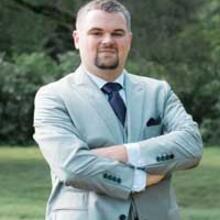

Bio:
Erik KANE is a SIMULIA R&D Industry Process Specialist in the Structures Workflow team at Dassault Systèmes. He specializes in the model build process for structural simulations (using the 3DEXPERIENCE platform and Abaqus/CAE) and Python scripting. He holds a BS in Mechanical Engineering from Cedarville University.
Abstract:
Extending the 3DEXPERIENCE Platform and Other Pre-Processors to Support Advanced Abaqus Features
Pre-processors for generating Abaqus input files (like the 3DEXPERIENCE Platform, Abaqus/CAE, or third-party tools) often do not support every feature of the Abaqus solver or may not support customer-specific needs and approaches. To address such limitations, Abaqus users often either manually edit an Abaqus input file to add these missing features or write scripts to automate these edits. These processes can be time-consuming and error-prone, or require a large up-front time investment from the user.
inpRW is a Python kernel utility for parsing, modifying, and writing Abaqus input files. It allows users to automate many tedious input file editing tasks, and many operations common to all keyword editing workflows have already been programmed. It organizes the information in the input file, and it provides functions which efficiently search and query the parsed data. Most of the tedious work of reading and writing to an input file has already been accomplished in this utility, which allows the user to focus their efforts on the unique aspects of their particular workflows.
The utility can be run through any Python 3.7+ interpreter, and it can be incorporated into the Keyword Editing tool of 3DEXPERIENCE. This talk will be a high-level overview of the utility and Keyword Editing in 3DEXPERIENCE, and will include some example workflows which use the utility.
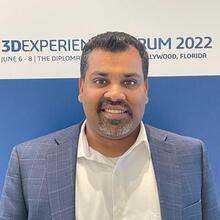
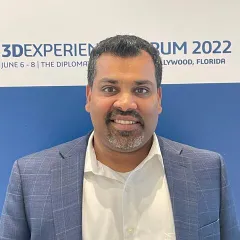
Bio:
Dr. Ramji KAMAKOTI is an Expert Solution Architect at Dassault Systèmes focusing on modelling and simulation for product virtual twin. He has over 20 years of experience in computational modelling and simulation focusing in areas such as fluid dynamics, structure dynamics and multi-physics in general. He is currently responsible for leading and providing technical solutions that involves integrated simulation-based design for a variety of industries. He received his masters and PhD in Engineering Mechanics from the University of Florida.
Abstract:
Modeling & Simulation 2023 Update
Designer-driven simulation, or MODSIM, is a crucial tool for product development that unifies modeling and simulation into a single process. In this presentation, we will showcase the key technology updates in 2023 that will facilitate MODSIM solutions across industries.

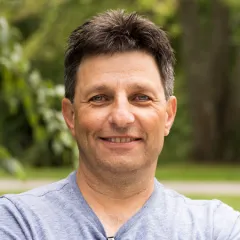
Bio:
Victor earned his PhD from Duke University in 1996 in the area of computational mechanics. He then joined what was the Abaqus R&D development in Rhode Island, which today is part Dassault Systèmes SIMULIA Corp. Victor has worked in a variety of R&D positions through the years and is today the Senior Technology Director and the Chief Scientific Officer for Structural applications. In the last few years at SIMULIA Victor has led from a simulation technology perspective a variety of multiphysics/multiscale simulation initiatives including machine learning, battery cell engineering, additive manufacturing, micro-mechanics based multiscale materials, particle methods for extreme deformation, oil and gas multiphysics formulations, realistic human simulation capabilities, co-simulation-based multi-physics modeling.
Abstract:
Machine Learning to Massively Accelerate Nonlinear Design Exploration in Full 3D
Physical simulations are performed at multi scales covering diverse physical domains. Macro scale continuum simulations are widely used for product design and evaluations due to high accuracy. To extract meaningful information from continuum simulations to the logical and functional scales, model surrogates are used to reduce minutes to days of execution times to seconds, allowing a high number of parameter evaluations in the design space. However, these model surrogates are of low fidelity and only provide limited information through a few scaler KPIs. To retain comprehensive 3D simulation results while reducing executing time, this work presents a neural network approach towards 3D interactive design exploration. Multi physics multi scale simulations [1] – FEA analyses of structural statics, dynamics, manufacturing, packaging and safety; CFD analyses of compressible fluids – are used as Design of Experiments (DOEs) to generate the parametric design data. The data is processed and used to train fast executing neural networks as 3D surrogates. Neural network algorithms and architectures (deep feed forward networks, recurrent and recursive nets etc.) [2] are chosen depending on the nature of the physical problem. Trained neural network models are deployed in a collaborative design environment for interactive design explorations. The proposed approach extends traditional model surrogates to cover both transient physical responses and 3D fields, which opens a new era for product designs.
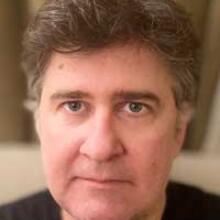
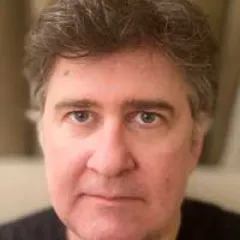
Bio:
Cristian has been part of the Linear Dynamics and Equations Solvers group in Simulia for 20 years. Over the years he had important contributions to all the linear equation solvers currently used in Abaqus Standard. He holds a Phd in Computational Acoustics from Clemson University.
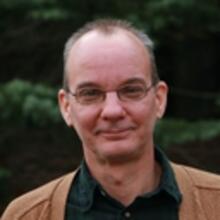

Bio:
Dr. MARLOW has over 30 years of experience in the fields of engineering analysis and applied mechanics. He is a Senior Expert at Dassault Systèmes SIMULIA Corp. where he has worked for the last 23 years. Dr. Marlow is considered an expert in applications of the finite-element programs Abaqus/Standard and Abaqus/Explicit. Dr. Marlow received his MS and PhD in Theoretical and Applied Mechanics from the University of Illinois. He graduated with a BS in Engineering Mechanics from the University of Missouri-Rolla.
Abstract:
Contact and Convergence in Abaqus/Standard
Convergence of the nonlinear solution method in Abaqus/Standard is of interest to everyone who uses the code. Nonlinear simulations very often include contact. Convergence and contact are therefore closely connected. This seminar is an overview of the nonlinear solution method in Abaqus/Standard and a discussion of its contact modeling technology. Attendees will learn how Abaqus/Standard produces results for nonlinear models and they will also learn about the latest recommended contact methods. Attendees will be able to use the knowledge to build more robust and more realistic simulations. Those who wish to learn more about the Newton-Raphson nonlinear solution method and contact in Abaqus/Standard are invited to attend. A working knowledge of the code will be beneficial.
Outline:
-Abaqus/Standard Convergence
The Newton-Raphson Method
Convergence Criteria
-Contact in Abaqus/Standard
Contact Discretization
Contact Constraint Enforcement
Contact Tracking
Recommended Contact
Initial Overclosure
LCP Contact
-Ten Comments on Abaqus Convergence


Bio:
Jaehwan CHOI got his Ph.D. degree from the Ohio State University in 2004 right before joining Abaqus, Inc. He continued to serve as technical consultant for Dassault Systemes SIMULIA Corp. after Dassault Systemes acquired Abaqus Inc. in 2005. He also has 11 year experience of working as CAE engineer for Hyundai Motor Company in South Korea. He focused on the body structure strength and durability simulations when he was working for Hyundai Motor Company.
His current role is supporting Abaqus and fe-safe worldwide focusing on material modeling and calibration, and simulation method development by using Abaqus and fe-safe (and fe-safe/Rubber). His specialty is rubber and plastic material modeling and rubber fatigue assessment including rubber material and fatigue testing.
Abstract:
SIMULIA Portfolio for Advanced Fatigue Topics
This half day training focuses on the vibration fatigue and the fatigue of elastomer by using SIMULIA products, Abaqus, fe-safe and fe-safe/Rubber. More fundamental fatigue topics were discussed in the last year’s pre-user-meeting training session. If you are interested in base-line fatigue assessment by using Abaqus and fe-safe, then please refer to the half day training material of the last year.
It will discuss about possible scenarios of dynamic fatigue calculation and demonstrate with real-world examples. fe-safe can handle both time- and frequency-domain vibration fatigue calculations. Time-domain vibration fatigue functionality can use any length of time signal excitation as duty cycle. Frequency-domain vibration fatigue functionality can use various PSD based fatigue algorithm in addition to the original Dirlik’s algorithm. fe-safe also be able to use SIMPACK generated dynamic stress history for the fatigue life calculation. The first half of this training will cover all of these vibration fatigue topics.
The second half of the training will discuss the fatigue of elastomers by using Abaqus and fe-safe/Rubber. It will discuss topics such as what differentiates the elastomer fatigue from the traditional metal fatigue and how to get the fatigue properties of elastomers, etc. This training will also provide demonstration and the current user’s use cases based on the publications.

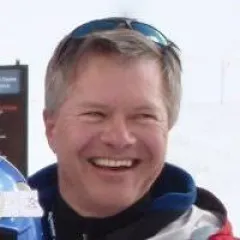
Bio:
Tod has worked in the field of nonlinear finite element analysis for over 20 years, and has held many positions within the SIMULIA organization. He has worked as the Engineering Services manager and later the General Manager of the Great Lakes CSE in the USA, and is now working for the SIMULIA R&D organization focusing attention on how we deliver advanced material modeling technology to our customers.
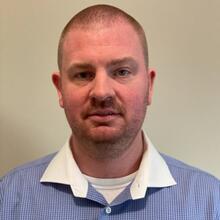

Bio:
Derek CAMPBELL achieved a Master’s of Science in Electrical Engineering from the Georgia Institute of Technology. During his career, he has helped measure material properties, antenna performance, and radar cross-section at the Georgia Tech Research Institute. In addition, he has helped Engineers use commercial CEM simulation software across a wide range of applications including antenna design, EMC, radar cross section, and radome design.
Abstract:
CST Studio Suite: Model Creation and Solver Basics
This seminar introduces Engineers to the basic processes required to simulate Electromagnetic (EM) performance with CST Studio Suite, which offers a complete technology. Attendees will initially learn about the available high frequency EM numerical methods. This overview helps Engineers minimize computational resource requirements through efficient solver selection. Attendees will also learn how to build a model, define excitations, and post-process results within a single, intuitive interface.

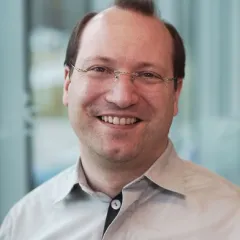
Bio:
Frank obtained his Ph.D. in Electrical Engineering from Ruhr-Universitaet Bochum, Germany, in 2008. During his graduate studies, he focused on modeling and simulating the plasma sheath in high intensity discharge lamps. After graduating, Frank joined Computer Simulation Technology (CST), which was subsequently acquired by Dassault Systèmes in 2016 and is now part of the SIMULIA brand. Frank worked in a number of technical presales roles and currently leads the global electromagnetics team within the SIMULIA Industry Process Consulting organization.
Abstract:
How-To: EMC/EMI Simulations to Improve Your Pass Rate
Electromagnetic Compatibility/Interference (EMC/EMI) are crucial topics for any device containing electronic components, such as cars, phones, laptops, or medical devices. Simulation is of great help here and can provide insights that are impossible to obtain from measurement. However, the setup and simulation runs can be challenging due to the complexity of the models. This presentation provides guidance on how to set up simulations for common workflows, such as radiated and conducted emissions. General knowledge of how to use Dassault Systèmes SIMULIA CST Studio Suite(R) is a prerequisite for this presentation.


Bio:
Yuriy ZHILICHEY (M.Sc. in Physics, 1976; Cand.Sc. in EE, 1987; Dr.-Eng. in EE, 1991) was born in Riga, USSR, in 1954. He has worked as an Electrical and Magnetics Design Engineer, Applications Engineer and Staff Scientist at scientific institutions and industrial companies in the USSR, Latvia, and USA.
In 2018 Y. Zhilichev joined Dassault Systèmes as an EMAG Industry Process Expert Specialist and Solution Consultant, and then more recently as a User Success Engineering Manager. He provides a technical and application support for Simulia Opera software.
Abstract:
Guide to Simulating Electrical Machines with Opera
Whether designing a motor or a generator, an axial or radial flux topology, rotating or linear motion, Opera provides a wide range of tools for electromagnetic design and multiphysics study such as thermal and structural analysis of electrical machines. Any machine topology can be modelled and solved.
Opera motional solvers comprise mechanical coupling and coupled electrical circuits, power supply control including soft, switching, PWM, current and position feedback. Opera allows users to simulate skewed structures, eccentricities and fault operation, demagnetization of permanent magnets and loss calculation including hysteresis effects. Opera can be linked directly to the industry-standard Simulink® software to co-simulate the transient performance of the complete drive or electromechanical system.
The integrated Machines Environment with the help of parameterized templates gives users the possibility to quickly and easily setup and analyze their customized machine designs using the static, transient or motional solvers. The Machine Environment also comprises multi-physics capabilities, optimization and standard design calculations such as back-EMF, cogging torque, load torque, open and short-circuit curves.
This presentation gives an overview of Opera 2D and 3D for the design and modeling of electrical machines. The talk will also cover an example of building the model of PM electrical machine, running the solution and post processing the results to determine the machine's characteristics. A brief introduction to Opera Machine Designer Tool and 3D Machine Environment will be given.
CST Studio Suite: Model Creation and Solver Basics
This seminar introduces Engineers to the basic processes required to simulate Electromagnetic (EM) performance with CST Studio Suite, which offers a complete technology. Attendees will initially learn about the available high frequency EM numerical methods. This overview helps Engineers minimize computational resource requirements through efficient solver selection. Attendees will also learn how to build a model, define excitations, and post-process results within a single, intuitive interface.
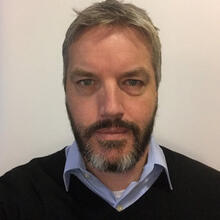
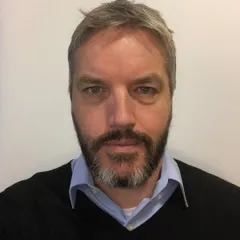
Bio:
Phil SHORTER has over 25 years of experience in the development of commercial vibro-acoustic simulation software. He was one of the co-founders of wave six LLC and led the teams responsible for the research, development, promotion and support of the Wave6 software. After the acquisition of wave six LLC by Dassault Systèmes, he has continued to lead the vibro-acoustics team as part of his role as a Senior R&D Director within SIMULIA. Phil holds a PhD in vibro-acoustics from the University of Auckland, New Zealand.
Abstract:
Vibro-Acoustics with wave6
Noise and vibration are becoming increasingly important in virtually every industry. Typical applications include: designing for interior noise in cars, aircraft, trains, ships, cabs and buildings; designing for exterior noise in wind turbines, Urban Air Mobility, tires and pass-by noise; designing for dynamic environments and shock in spacecraft and launch vehicles; designing for stealth in ships, submarines and UAVs; designing for sound quality and speech intelligibility in mobile phones, loudspeakers and public address systems. In many of these applications it is important to consider noise and vibration across the entire audible frequency range. This requires the use of a combination of simulation methods including both low frequency mesh based methods and mid/high frequency statistical wave based methods. SIMULIA’s vibro-acoustic simulation software ‘wave6’ includes the full spectrum of vibro-acoustic analysis methods in order to efficiently simulate noise and vibration across a broad frequency range. This presentation will provide an overview of wave6. A number of new methods will be discussed along with recent application examples.
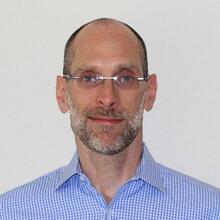
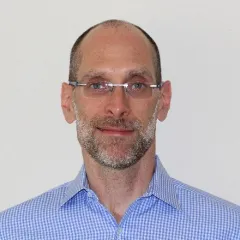
Bio:
Dr. Matias G. ZIELONKA is a SIMULIA Industry Process Consultant with 25 years of experience as a developer, researcher, designer, and consultant in computational mechanics, multiphysics simulation, and engineering simulation software development.
Before his current role at SIMULIA, Dr. ZIELONKA worked for 12 years at ExxonMobil Corporation's Upstream Research Company in various capacities as a scientist, developer, and technical advisor for several modeling and simulation projects, and he led the development of proprietary engineering simulation technology, tools and workflows.
He has also worked as software developer at MSC Software Corporation where he developed new capabilities for the NASTRAN solver as well as co-simulation platforms for fluid-structure interaction and multi-body dynamic analysis and at Tenaris Corporation, where he worked on computational fluid dynamics applications for the steel industry.
Dr. ZIELONKA earned his Mechanical Engineering degree from the University of Buenos Aires, and his M.Sc. and Ph.D. in Aeronautical Engineering from the California Institute of Technology.
Abstract:
Advanced Seminar in Li-Ion Battery Multiphysics/Multiscale Modeling and Simulation
This advanced seminar will focus on the use of Abaqus Standard, Simulia's flagship implicit FEA solver, for modeling and simulating the fundamental multi-scale and multi-physics processes that occur in the electrodes and electrolyte of Li-Ion batteries. These processes include electrochemical reactions, diffusion and absorption of lithium into the structure of electrode particles, transport of charged species in the electrolyte, conduction of currents through the solid and liquid phases of porous electrodes, its associated heating and heat transfer, and the poro-mechanical deformation induced by lithiation swelling.
Through a series of case studies, participants will gain insights into using Abaqus Standard to simulate and investigate the electrochemical, thermal, and poro-mechanical behavior of Li-Ion batteries under various operating conditions, including charging and discharging cycles, abusive mechanical and thermal loading, as well as the mechanisms behind battery aging and its impact on performance. The seminar will also cover parametric modeling workflows for standard Li-Ion battery cell geometries and reduced-order techniques that significantly reduce the computational cost of simulating complex Li-Ion battery systems.
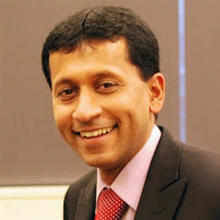

Bio:
Siva (Sivapalan) SENTHOORAN is the Director for Acoustics Industry Process at Dassault Systèmes, where he is responsible for the development and deployment of digital solutions for vehicle acoustics and cabin comfort. He holds a Ph.D. in computational aeroacoustics and has more than 20 years of experience in working with worldwide vehicle manufacturers on their aeroacoustic problems.
Abstract:
Digital Solutions to Achieve Desired Aeroacoustic Comfort without Compromising Performance
JD Power ranks noise comfort among consumers’ top 10 complaints in studies of initial vehicle quality. Excessive noise inside the cabin greatly reduces passenger comfort, causes noise fatigue and affects accuracy of infotainment systems. Therefore, reducing vehicle’s interior noise is a top priority for engineers due to its impact on customer experience, brand loyalty, and sales.
SIMULIA provides several best in class solutions to help vehicle OEMs design quieter & comfortable vehicles while reducing cost and development time. This talk will provide an overview of the aeroacoustic solutions from SIMULIA and the end to end vehicle development process management for aeroacoustic comfort in the 3DExperience platform through SIMULIA’s MODSIM approach. It will also cover the integration of the simulation results from MODSIM into NVH simulators to enable the assessment of human experiences in realistic environments and move the vehicle development process closer to virtual sign-off without the need for prototypes.
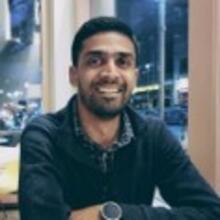
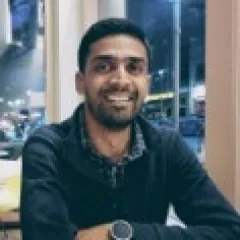
Bio:
Anirudh RAJAGOPAL has been working as Industry Process Consultant at SIMULIA since 2019, and joined the Worldwide Fluids team through the integration of the former Exa Corporation. With nearly 7 years of experience in fluids and thermal sciences, he serves as an expert voice in supporting customers across all industries including Industrial Equipment and Transportation & Mobility. His responsibilities within the Worldwide SIMULIA Fluids team focus on deployment of our fluids solutions to improve customer processes notably through automation
Abstract:
SIMULIA fluid solutions on 3DEXPERIENCE Cloud
This session will present a step by step demonstration of our fluid solutions PowerFLOW and Fluid Dynamic Engineer role. The end to end demo will highlight the functionalities and latest process automation improvements and how it can accelerate evaluation and improvement of product performance, reliability and safety. An aerodynamic PowerFLOW workflow will be demonstrated on the 3DEXPERIENCE Cloud and a brake cooling example will be demonstrated using Fluid Dynamics Engineer on the 3DEXPERIENCE Cloud. By performing these demos the 3DEXPERIENCE Cloud we are also able to illustrate the resulting additional benefits of the cloud environment in the context of Dassault Systemes CFD solutions.
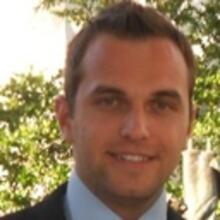
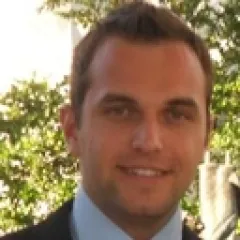
Bio:
After obtaining a Master’s degree in Aerospace engineering from ISAE-Supaero and a PhD from the University of Michigan, Nicolas worked on modelling gas flows for mission planning and data analysis of the European Space Agency’s Rosetta mission for which he received a NASA Achievement Award. Then, Nicolas joined Exa Corporation (acquired by Dassault Systèmes in 2018) as a Senior Application Engineer supporting deployment of Fluids solutions at all automotive customers in North America and eventually taking the lead of that team as a Technical Manager. Nicolas currently leads a team within the Worldwide SIMULIA Fluids group, which focuses on deploying technology leading SIMULIA Fluids solutions to help improve our customers’ product development processes for all industries.
Abstract:
SIMULIA fluid solutions on 3DEXPERIENCE Cloud
This session will present a step by step demonstration of our fluid solutions PowerFLOW and Fluid Dynamic Engineer role. The end to end demo will highlight the functionalities and latest process automation improvements and how it can accelerate evaluation and improvement of product performance, reliability and safety. An aerodynamic PowerFLOW workflow will be demonstrated on the 3DEXPERIENCE Cloud and a brake cooling example will be demonstrated using Fluid Dynamics Engineer on the 3DEXPERIENCE Cloud. By performing these demos the 3DEXPERIENCE Cloud we are also able to illustrate the resulting additional benefits of the cloud environment in the context of Dassault Systemes CFD solutions.
SIMULIA PowerFLOW Process Automation with the 3DEXPERIENCE Platform
With the introduction of the Power By capability in SIMULIA PowerFLOW last year, we have now the opportunity to leverage the 3DEXPERIENCE Platform to further automate our fluids solutions with our lattice Boltzmann solver. Indeed, PowerFLOW can directly connect to the 3DEXPERIENCE Platform allowing to create an end-to-end MODSIM process within a Dashboard on the Platform.
The connection between CAD and the CFD simulations is enabled by the 3DEXPERIENCE Platform providing the opportunity to take full advantage of the CAD parametrization to make educated design changes and understand their impact. All model revisions are captured through the PLM on the 3DEXPERIENCE Platform providing clear information to all stakeholders to improve collaboration. Moreover, the geometry preparation for CFD is fully automated with the Advanced Common Model Build (ACMB) minimizing the engineering time spent on model preparation.
This presentation will focus on how engineers and designers can take advantage of the automation of PowerFLOW through the 3DEXPERIENCE platform for a broad range of workflows to reduce their process turnaround time.
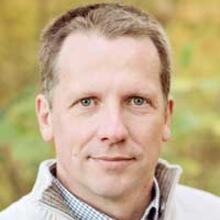
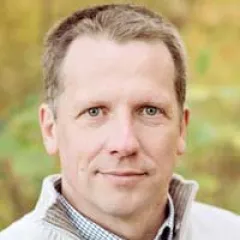
Bio:
Wulf ROEVER holds the position of Industry Process Consultant Director for multi-body system analysis at SIMULIA and has about 25 years of CAE experience in Finite Element and Multi-Body System Dynamics.
Wulf completed his Masters at the Technical University in Aachen, Germany in Chemical Engineering. He worked for 12 years for FEV, an engineering consulting company in Germany and the US, in the CAE department and developed analysis processes and executed MBS and FEA analyses for internal combustion engines, hydraulic pumps, and unconventional powertrains, driveline and vehicle development projects. In 2010, he joined Simpack-US to promote the MBS software Simpack in North America. After the acquisition of Simpack by Dassault Systèmes in 2014, he became part of the SIMULIA brand.
Abstract:
Multi-Body System Dynamics
Multi-body system (MBS) analyses are applied throughout many different industries and applications on many different levels in the product life cycle. MBS can be deployed at very early stages in the product development process during design concept studies, during any stage of the product development process, but also after the product is released to the market. MBS can even be used for trouble shooting complex error states of subsystem interactions, evaluate possible design counter measures and design changes to avoid or mitigate very specific physical system phenomena that occur during normal operations or under extreme and rare system boundary conditions.
The attendee will learn during this seminar about the wide range of applications where the multi-body system software SIMULIA/Simpack provides value to users worldwide. It contains a view of the software architecture and technology inside the tool, which is the basis to provide significant advantages over other commercially available MBS-tools. It is followed-up by an in-depth exploration of processes and workflows in two specific application areas.
The first one is the system environment of the electric powertrain and how to address some of its requirements with the help of the SIMULIA software portfolio inside the SIMULIA/Simpack centered industry process experiences (IPEs).
The second application is the complex field of vehicle dynamics, which will be presented in a customizable graphical user interface, which allows the efficient and error free use of SIMULIA/Simpack technology for vehicle dynamics experts and application specialist.
This example will show how to support and enable the trend in the industry, not only in automotive, to democratize simulation and deploy it throughout an organization.

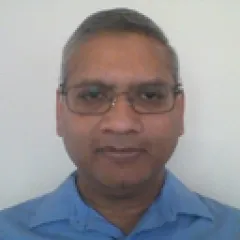
Bio:
Prasad has over 30 years of automotive industry experience performing vehicle dynamics simulations and durability loads predictions. He is now a Multibody Systems Industry Process Consultant at Dassault Systèmes SIMULIA Corp. Prasad has received Masters Degrees from State University of New York at Buffalo and University of Michigan.
Abstract:
Multi-Body System Dynamics
Multi-body system (MBS) analyses are applied throughout many different industries and applications on many different levels in the product life cycle. MBS can be deployed at very early stages in the product development process during design concept studies, during any stage of the product development process, but also after the product is released to the market. MBS can even be used for trouble shooting complex error states of subsystem interactions, evaluate possible design counter measures and design changes to avoid or mitigate very specific physical system phenomena that occur during normal operations or under extreme and rare system boundary conditions.
The attendee will learn during this seminar about the wide range of applications where the multi-body system software SIMULIA/Simpack provides value to users worldwide. It contains a view of the software architecture and technology inside the tool, which is the basis to provide significant advantages over other commercially available MBS-tools. It is followed-up by an in-depth exploration of processes and workflows in two specific application areas.
The first one is the system environment of the electric powertrain and how to address some of its requirements with the help of the SIMULIA software portfolio inside the SIMULIA/Simpack centered industry process experiences (IPEs).
The second application is the complex field of vehicle dynamics, which will be presented in a customizable graphical user interface, which allows the efficient and error free use of SIMULIA/Simpack technology for vehicle dynamics experts and application specialist.
This example will show how to support and enable the trend in the industry, not only in automotive, to democratize simulation and deploy it throughout an organization.
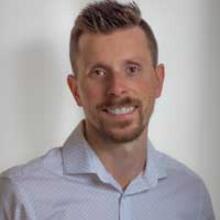
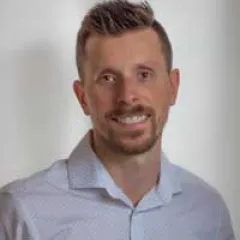
Bio:
Chris OLSON has spent the last decade working with Dassault Systèmes tools to help companies streamline their product development processes through the use of analysis tools. After graduating with a Bachelors degree in Mechanical Engineering from University of Wisconsin – Milwaukee, he worked for a Dassault Systèmes’ partner where he helped companies in various industries implement SOLIDWORKS and 3DEXPERIENCE analysis tools and provided consulting and training services in the areas of Computational Fluid Dynamics, Multi-body Dynamics, Linear & Non-Linear FEA, and Injection Molding Analysis. Chris now uses his extensive analysis experience in the area of Process Automation on the 3DEXPERIENCE platform to help customers improve their Simulation Data Management processes and streamline productivity through the use of Analysis Templates.
Abstract:
Democratizing Simulation Methods to enable Analysts, Designers and Systems Engineering
In this session, attendees will gain an understanding of how 3DEXPERIENCE process applications can be utilized to build and democratize simple to increasingly more complex simulation workflows to significantly increase throughput of design, simulation and systems engineers. Several sample use cases will be presented in order to provide explicit industrial examples driving execution of platform native, home grown applications and third party solvers. The session will also show how web-based user interfaces can be developed to better support democratization and collaborative reviews from directly dashboards. In conclusion, an example of how the recently released CATIA Magic (Cameo) Process Composer plugin will be showcased along with a discussion of how it provides significant value to systems engineering.

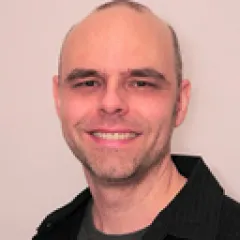
Bio:
Dominick has over 25 years of experience in the CAE space using a variety of solvers across multiple industries. Over the last decade Dominick was involved with several customers defining best practices for CAE-related methodologies enabling simulation management, automation and process democratization. More recently, his focus was dedicated to define MBSE methodologies enabling the system engineers to perform expert level simulations and trade studies as early as possible in the product development cycle. His work also includes efforts around the 3DEXPERIENCE V&V strategy to help customers capture the digital thread between requirements and simulation results.
Abstract:
Democratizing Simulation Methods to enable Analysts, Designers and Systems Engineering
In this session, attendees will gain an understanding of how 3DEXPERIENCE process applications can be utilized to build and democratize simple to increasingly more complex simulation workflows to significantly increase throughput of design, simulation and systems engineers. Several sample use cases will be presented in order to provide explicit industrial examples driving execution of platform native, home grown applications and third party solvers. The session will also show how web-based user interfaces can be developed to better support democratization and collaborative reviews from directly dashboards. In conclusion, an example of how the recently released CATIA Magic (Cameo) Process Composer plugin will be showcased along with a discussion of how it provides significant value to systems engineering.
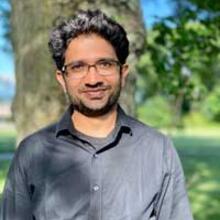

Bio:
Education:
-Bachelor of Engineering in Mechanical Engineering (2007)
Osmania University, India
-Master of Science in Mechanical Engineering (2018)
University of Cincinnati, Ohio, USA
Overall Experience:
-In Industry: 12 years (4+ years in 3DS); In Academia: 4 years
-Industrial and academic experience in solid mechanics, biomechanics, finite element analysis, process automation, multi-disciplinary optimization and product lifecycle management.
Abstract:
Democratizing Simulation Methods to enable Analysts, Designers and Systems Engineering
In this session, attendees will gain an understanding of how 3DEXPERIENCE process applications can be utilized to build and democratize simple to increasingly more complex simulation workflows to significantly increase throughput of design, simulation and systems engineers. Several sample use cases will be presented in order to provide explicit industrial examples driving execution of platform native, home grown applications and third party solvers. The session will also show how web-based user interfaces can be developed to better support democratization and collaborative reviews from directly dashboards. In conclusion, an example of how the recently released CATIA Magic (Cameo) Process Composer plugin will be showcased along with a discussion of how it provides significant value to systems engineering.


Bio:
Olivier SCHREIBER has been a High-Performance Computing (HPC) Applications Engineer at HP, SGI, HPE and now AMD since 2001 and contracted at SpaceX, Virgin Orbit and Google X. Before that, he was at Boeing North American and McDonnell Douglas as a Principal Engineer/Scientist/Computing Specialist. Earlier, he was a Nastran developer at The MacNeal-Schwendler Corporation. Olivier holds an MS and PhD in Aerospace Engineering from the Georgia Institute of Technology. For his thesis, he developed a time marching multiprocess interactive Computational Fluid Dynamics code with graphical 3D visualization and user interface which led to five publications. His initial engineering diploma is from France's Supaero.
Title:
Improving SIMULIA Abaqus FEA Performance on AMD EPYC Processors, Generation to Generation
Abstract:
Users of SIMULIA Abaqus Standard and Explicit should be able to rely on significant performance improvements with each new generation of system CPU. Systems powered by dual 32-core and 64-core 4th Gen AMD EPYC™ processors demonstrate outstanding generational performance uplifts compared to dual 32-core and 64-core 3rd Gen AMD EPYC processors across a variety of SIMULIA Abaqus Standard and Explicit benchmarks. In this talk we will present the latest performance results and show how multi-node runs exhibit scaling for both Standard and Explicit. SIMULIA Abaqus upgrade from 2022 to 2023 performance benefits will also be covered. Lastly, we will offer recommendations for Hybrid-MPI mode run configurations with number of ranks equal to number of NUMA domains, and number of threads equal to the number of cores per NUMA domain within other constraints.
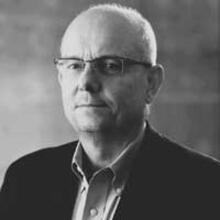
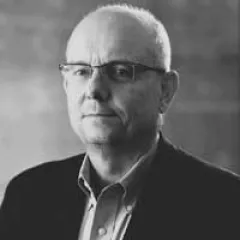
Bio:
Rick KNOECHEL is a Senior Technical Lead for Public Cloud HPC at AMD. Rick joined AMD in October of 2021 after stints with Oracle Cloud Infrastructure and Rescale leading Sales and Solutions Operations in the Great Lakes Region. During his time at Rescale in the Great Lakes Region, sales doubled, year over year for Cloud based HPC. Well versed in all aspects of Cloud Based HPC, Rick has worked for a number of IT Industry leaders over the past 20+ years including Dell, EMC, NetApp, Platform Computing and others. Rick also ran Sales, Marketing and Customer Service for Powerway, the Global Automotive Industry's Largest APQP/PPAP Cloud based solutions for Supply Chain Collaboration supporting the AIAG standards for the Vehicle Product Development Process (PDP). Prior to his "2nd Career" in IT, Rick was a Consulting and Sales Engineer selling numerous Engineering products and Technology services, including CAE Simulation services, to the Global Automotive, Aerospace and Discrete and Process Manufacturing communities. Rick also has extensive experience in many engineering aspects of Motorsports and has consulted in nearly every form of Motorsports. Rick has Master's Degrees in both Mechanical Engineering and Computer Science along with Undergraduate Degrees in Physics and Mathematics.
Title:
AMD – The Compute Engine that Powers Cloud HPC
Abstract:
HPC usage in the cloud is growing at rate that is >3X greater than the current growth in on-premise HPC systems. The maturity, availability, scalability, reliability and affordability of Cloud HPC is now giving cause for major manufacturing companies to rethink their approaches to HPC. With performance that is now on par with on-prem systems, combined with cloud-friendly ISV licensing models, end users are realizing the benefits of being able to run CAE simulations entirely in an on-demand manner, where the customer pays only for the compute they use and can break free from the constraints of traditional on-prem environments.
For most HPC applications, AMD is truly the compute engine of choice for Cloud HPC, when “cost of job” is the ultimate metric to justify transition to the cloud. AMD’s industry-leading price-performance for EPYC CPUs are setting the standards for time to solution and cost of job in the cloud. In this presentation, we will share an overview of AMD’s presence in Cloud HPC with our largest partners.
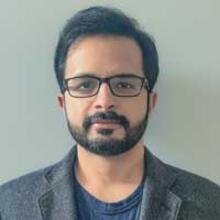

Bio:
Manish BARLINGAY is an expert in Structural Mechanics and leads the modeling and simulation team at Inceptra. He has over a decade of experience working with a broad spectrum of CAE customers across various industries including transportation, aerospace, industrial equipment and life sciences, helping them solve their physics simulation challenges using the Dassault Systèmes simulation tools. Manish graduated from the University of Cincinnati with a master’s degree in Mechanical Engineering.
Title: Data Driven Design on the 3DEXPERIENCE Platform
Abstract:
Are you exploring enough design iterations to help you make the best product decisions? Let the data speak and guide you like never before! Learn how the newest integrated modeling and simulation (MODSIM) technology on the 3DEXPERIENCE platform helps you accelerate your design exploration and derive meaningful insights to drive your design.
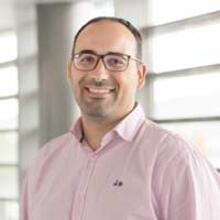

Bio:
Javier GUTIÉRREZ has a MSc in Mechanical and Control Systems Engineering from the University of Valladolid. He also studied a MSc in Automotive Motorsport Engineering from the University of Mondragon/Epsilon-Euskadi. He has spent the last 10 years working in several international projects related to vehicle dynamics and chassis development, control systems and electric vehicles, with a high focus on MSC. ADAMS modelling and simulation for different performances including both vehicle dynamics, comfort and durability applications. Special interest on motion comfort measurement as well as its subjective / objective correlation to be applied to passenger comfort estimation of autonomous vehicles.
Title: Subjective Comfort Evaluation Using Simpack
Abstract: Toyota Motor Europe (TME) and IDIADA have worked together to transition from physical to virtual ride comfort development to reduce vehicle development time and costs, and to improve vehicle quality. They have validated a process to integrate Simpack Realtime models on their dynamic simulator for virtual ride comfort development. The process has strong potential for the future and could lead to a reduction in the number of vehicle prototypes needed. The study highlights the importance of virtual simulations in improving vehicle design and the potential of Simpack Realtime models in achieving this goal.
Bio:
Javier GUTIÉRREZ has a MSc in Mechanical and Control Systems Engineering from the University of Valladolid. He also studied a MSc in Automotive Motorsport Engineering from the University of Mondragon/Epsilon-Euskadi. He has spent the last 10 years working in several international projects related to vehicle dynamics and chassis development, control systems and electric vehicles, with a high focus on MSC. ADAMS modelling and simulation for different performances including both vehicle dynamics, comfort and durability applications. Special interest on motion comfort measurement as well as its subjective / objective correlation to be applied to passenger comfort estimation of autonomous vehicles.
Title: Subjective Comfort Evaluation Using Simpack
Abstract: Toyota Motor Europe (TME) and IDIADA have worked together to transition from physical to virtual ride comfort development to reduce vehicle development time and costs, and to improve vehicle quality. They have validated a process to integrate Simpack Realtime models on their dynamic simulator for virtual ride comfort development. The process has strong potential for the future and could lead to a reduction in the number of vehicle prototypes needed. The study highlights the importance of virtual simulations in improving vehicle design and the potential of Simpack Realtime models in achieving this goal.
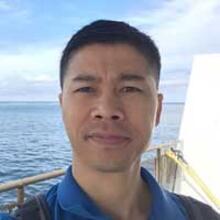
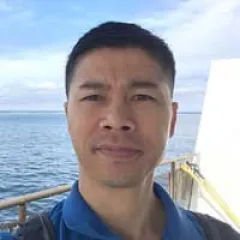
Bio:
Yushi TAN started his career as an application engineer for CST of America in the support team, helping customers to find solutions in Microwave Radio Frequency Component Design, Antenna Design, Electromagnetic Compatibility/Electromagnetic Interference, Signal Integrity, and Power Integrity applications using CST Studio Suite. Yushi then moved to the pre-sales team to promote the solution of CST Studio Suite to customers in a wide range of application areas in the High-Tech and Aerospace Defense industries after joining Dassault Systèmes. He is also a Dassault Systèmes certified instructor for numerous CST courses and has taught classes to commercial as well as government customers. Yushi completed his M.S.E. in Electrical Engineering at the University of Massachusetts Lowell.
Title: Highly Virtual Prototyping – Device Thermal Performance
Abstract:
This presentation demonstrates the integration of a Cameo Enterprise Architecture (EA) model with SIMULIA fe-safe software to achieve system-level requirements verification. Providing objective evidence that requirements are met in design is more cost-effective when using simulations. Executable SysML models are often parametric, but Cameo EA does not provide the depth of options for structural analysis often required. Employing fe-safe capabilities to optimize the product based on specified constraints, parameters, and operating conditions seamlessly transitions results into the Cameo EA model for end-to-end requirements traceability and sell-off.
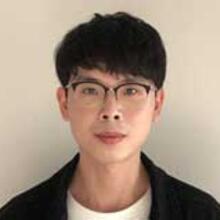
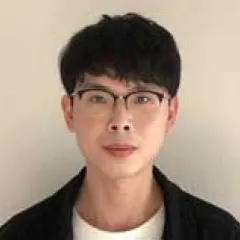
Bio:
Shuoran graduated from Texas A&M University with Ph.D. degree in Mechanical Engineering major in 2020, and joined P&G as a modeling scientist in the same year. His work includes develop and apply constitutive models of polymer systems with an emphasis on multiscale understanding of how key material characteristics influence process and/or product performance. He has implemented Abaqus into solid mechanics field to solve damage related problems and predict the mechanical behaviors of soft materials for more than 8 years.
Title: Micro-scale modeling to the dry mechanical behavior of open-cell foam with ABAQUS
Abstract: The content is to outline the developed modeling methodology to study the dry mechanical behavior of the open-cell foam, with the combination of multiple commercial modeling tools including abaqus and surface-evolver. The effect of polydispersity and porosity on the dry mechanical behaviors will be demonstrated as well.
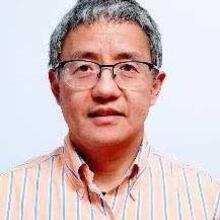
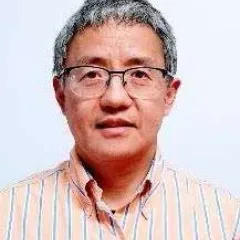
Bio:
Qijun ZHANG was born in China and graduated from Nanjing Institute of Technology. He then pursued a PhD in Mechanical Engineering from the University of Hong Kong. After completing his education, he joined the Noise and Vibration department at General Motors (GM) and has been with the company ever since. Currently, he serves as Sr Staff Engineer in the N&V VDDV group, and he is also the Global Simulation Owner.
As the Global Simulation Owner, Qijun is responsible for developing and refining N&V analysis processes and methods. He has made significant contributions to the development of advanced simulation technologies and methodologies that have also helped to improve GM's noise and vibration testing capabilities.
Qijun is a prolific researcher and has published over 50 papers and three books on various topics related to Noise and Vibration. Additionally, he has filed over 15 patents, trade secrets, and defensive publications, reflecting his expertise and innovation in the field.
His research interests include acoustic analysis, modal analysis, substructuring, transfer path analysis, and other aspects of vibration and noise control. Outside of work, Qijun enjoys hiking, playing tennis, and has recently taken up the sport of pickleball.
Qijun's passion for his work, dedication to research, and diverse interests make him a well-rounded and highly respected engineer in the field of Noise and Vibration, and his contributions to the field have been very well recognized.
Title:
Full spectrum simulation of vehicle interior acoustic transfer function (ATF) using wave6
Abstract:
The infotainment and audio systems of vehicles are becoming increasingly important for consumers. The traditional development process for the design of the loudspeakers and audio system involves providing a test vehicle to a supplier and having the supplier ‘tune’ the audio system for a given vehicle (and vehicle configuration). In order to bring this process upfront and more integrated in the design process it is necessary to develop new methods for numerical simulation of the interior acoustic transfer function (ATF) over the entire audible frequency range. This paper describes a joint project carried out by General Motors and Dassault SYSTEMES that used wave6 to model the interior acoustics in a vehicle across the entire audible frequency range. The paper will discuss some of the functionality that was used in wave6 for this type of simulation along with comparisons of simulations with test data.
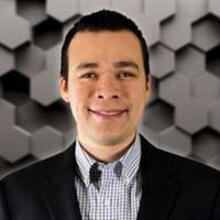
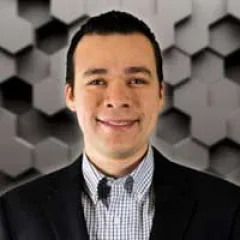
Bio:
Dr. BAROCIO is the Director of the Composites Additive Manufacturing and Simulation Consortium at the Purdue Composites Manufacturing and Simulation Center. He obtained a Ph.D. from Purdue University and a BSc in Mechatronics Engineering from Tecnologico de Monterrey. Dr. BAROCIO research is in modeling and simulation of composites manufacturing processes as well as in developing hybrid manufacturing processes for composites. His work is primarily in the field of extrusion deposition additive manufacturing with fiber reinforced polymers. During his Ph.D., Dr. BAROCIO led the development of the composites additive manufacturing research instrument (CAMRI) and codeveloped a comprehensive physics-based process simulation workflow for additive manufacturing called Additive3D.
Title:
Digital Twins for Composites Manufacturing Developed at the Purdue DS Center of Excellence
Abstract:
This presentation showcases physics-based digital twins developed at Purdue's Composites Manufacturing and Simulation Center, a DS center of excellence, with a focus on composites manufacturing processes. Among the digital twins featured is Additive3D, a cutting-edge solution for large-scale additive manufacturing that enables virtual engineering to ensure first-time-right printing and performance investigation of as-printed parts. Attendees will gain valuable insights into the capabilities of Additive3D and the benefits of using digital twins to drive composites manufacturing.
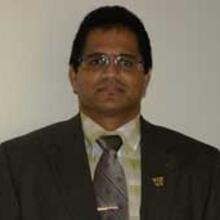

Bio:
Dr. Upul ATTANAYAKE is a Professor of Civil and Construction Engineering at Western Michigan University (WMU), Kalamazoo, Michigan. He is the director of the Michigan Department of Transportation Center of Excellence for Structural Durability at WMU. Dr. ATTANAYAKE’s technical specialties include structural and bridge engineering, concrete durability, accelerated bridge construction, condition assessment and health monitoring of structures, nondestructive testing, and finite element applications. Dr. ATTANAYAKE has secured more than $4.3 million research funding from various agencies. Dr. ATTANAYAKE is a registered Professional Engineer (PE) in the state of Michigan. Dr. ATTANAYAKE has been recognized with many awards including the inaugural Presidential Innovation Professorship at WMU in 2020.
Title: Finite Element Simulation of the Combined Effects of Creep & Shrinkage in Post-Tensioned Tie Girders
Abstract:
An unbraced network arch bridge was constructed to carry the 2nd Avenue traffic over the interstate (I) 94 in Detroit, Michigan. The bridge is 265 feet long, 96.5 feet wide, and 18-degree skew and comprises of posttensioned concrete tie girders, posttensioned concrete knuckles, posttensioned concrete end diaphragms, transverse steel floor beams, lateral steel bracings, steel arch ribs, hangers, and a deck system. The bridge construction involved multiple construction stages. The tie girders were post-tensioned in three steps while the knuckles and end diaphragms were post-tensioned in a single step. The bridge was partially constructed offsite, and moved to the final alignment using self-propelled modular transporters (SPMTs) to complete the superstructure construction. The fabrication of the first concrete component to the end of construction took approximately 414 days. The state of stress in the posttensioned components are of a concern when the construction stages and schedule are considered. The objective of this study is to establish the final stress state in the posttensioned tie girders at the completion of construction. A 3D finite-element model of a single vertical frame of the bridge, consisting of the arch held in-plane by the concrete knuckles located at each corner of the tie girder, was created using Abaqus. Tie girders were modeled with hexahedral elements. Post-tension strands were modeled with 3D truss elements. The construction sequencing, support restraints, time-dependent concrete mechanical properties, creep, and shrinkage were accounted when modeling the tie girder stresses. The concrete creep and shrinkage were modeled using the Abaqus user-defined subroutines.
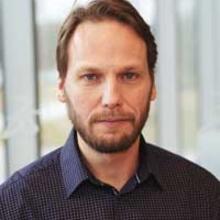

Bio:
Andras LASZLOFFY is a Director of R&D at Dassault Systèmes responsible for leading the development of the SIMULIA Process Automation, Design Exploration, and Test Management cross-disciplinary MODSIM product portfolios. Before his current role, Andras managed the development of the 3DEXPERIENCE Structural Modeling and Scenario applications. Prior to working on 3DEXPERIENCE products, Andras filled multiple roles as a developer in the Abaqus solver teams. Andras holds an MSc in Mechanical Engineering from the State University of New York at Buffalo and an MBA from the University of Michigan. Andras is passionate about combining Dassault Systèmes capabilities in unique ways to create disproportionate value for customers.
Ttile: Design Exploration 2023 Update
Abstract:
The Design Exploration and Simulation Process Automation software portfolios serve as the backbone of the 3DEXPERIENCE Modeling and Simulation engineering platform. In this session, we will share recent developments that enable the efficient and affordable exploration of the feasible design space throughout the product development cycle and the robust authoring and democratization of automated simulation processes.
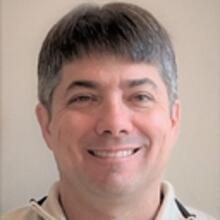
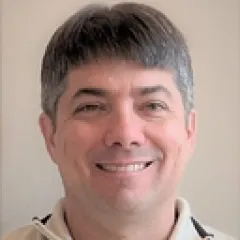
Bio:
David KOKAN is an R&D Technologies Application Director focused on design exploration applications and technologies within the 3DEXPERIENCE platform. He joined Dassault Systèmes fifteen years ago with the acquisition of Engineous Software and its Isight technology. David holds a BS in aerospace engineering from Virginia Tech as well as MS and PhD in aerospace engineering from Georgia Tech.
Title: Design Exploration Applications and Methods
Abstract:
Enabled by the integration of modeling and simulation, Dassault Systèmes is revolutionizing the efficient use of design exploration to facilitate discovery, innovation, and decision making. Removing the barrier of entry due to stitched-up solutions that prevent wide adoption and require deep skills and experience empowers efficient design exploration throughout the entire product lifecycle.
Key topics that will be addressed in this webinar include:
- Overview of design exploration concepts and benefits
- Product demonstrations showcasing exploration studies through a scalable portfolio of 3DEXPERIENCE applications
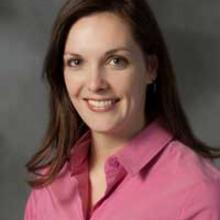

Bio:
Christina FEIST is a Portfolio Director at Dassault Systèmes with product management responsibilities for Design Exploration, Process Automation, and Generative Design applications. Over her 25-year career, she has spent the last 18 years at Dassault Systèmes in various roles, including product management, strategy, and application engineering. In addition, she enjoys working with customers to leverage the value of modeling and simulation solutions. Christina holds a BS in Mechanical Engineering from the University of Michigan.
Title: Design Exploration Applications and Methods
Abstract:
Enabled by the integration of modeling and simulation, Dassault Systèmes is revolutionizing the efficient use of design exploration to facilitate discovery, innovation, and decision making. Removing the barrier of entry due to stitched-up solutions that prevent wide adoption and require deep skills and experience empowers efficient design exploration throughout the entire product lifecycle.
Key topics that will be addressed in this webinar include:
- Overview of design exploration concepts and benefits
- Product demonstrations showcasing exploration studies through a scalable portfolio of 3DEXPERIENCE applications
